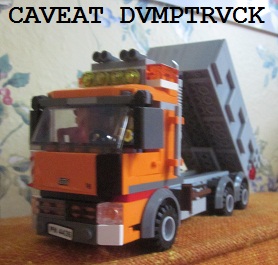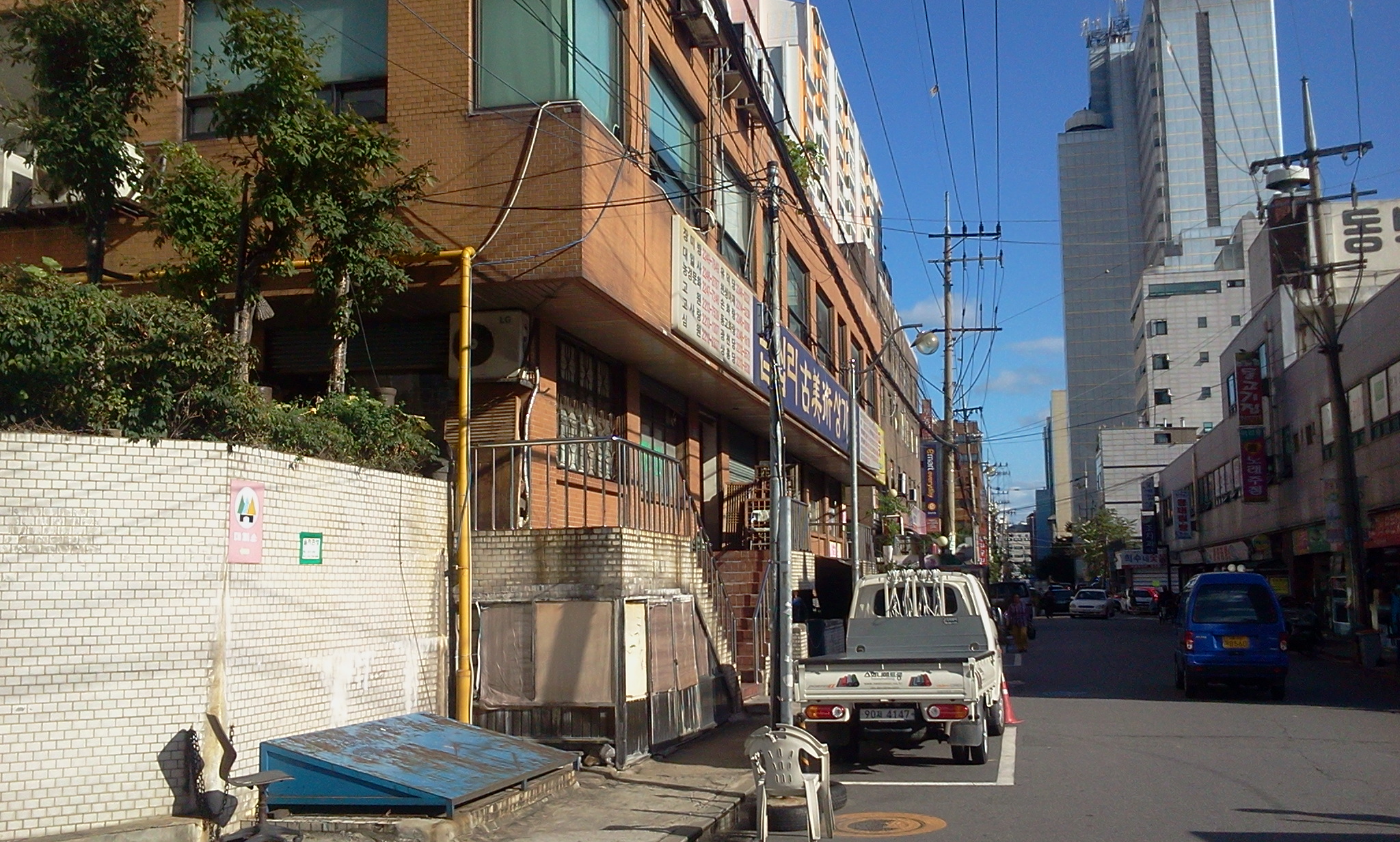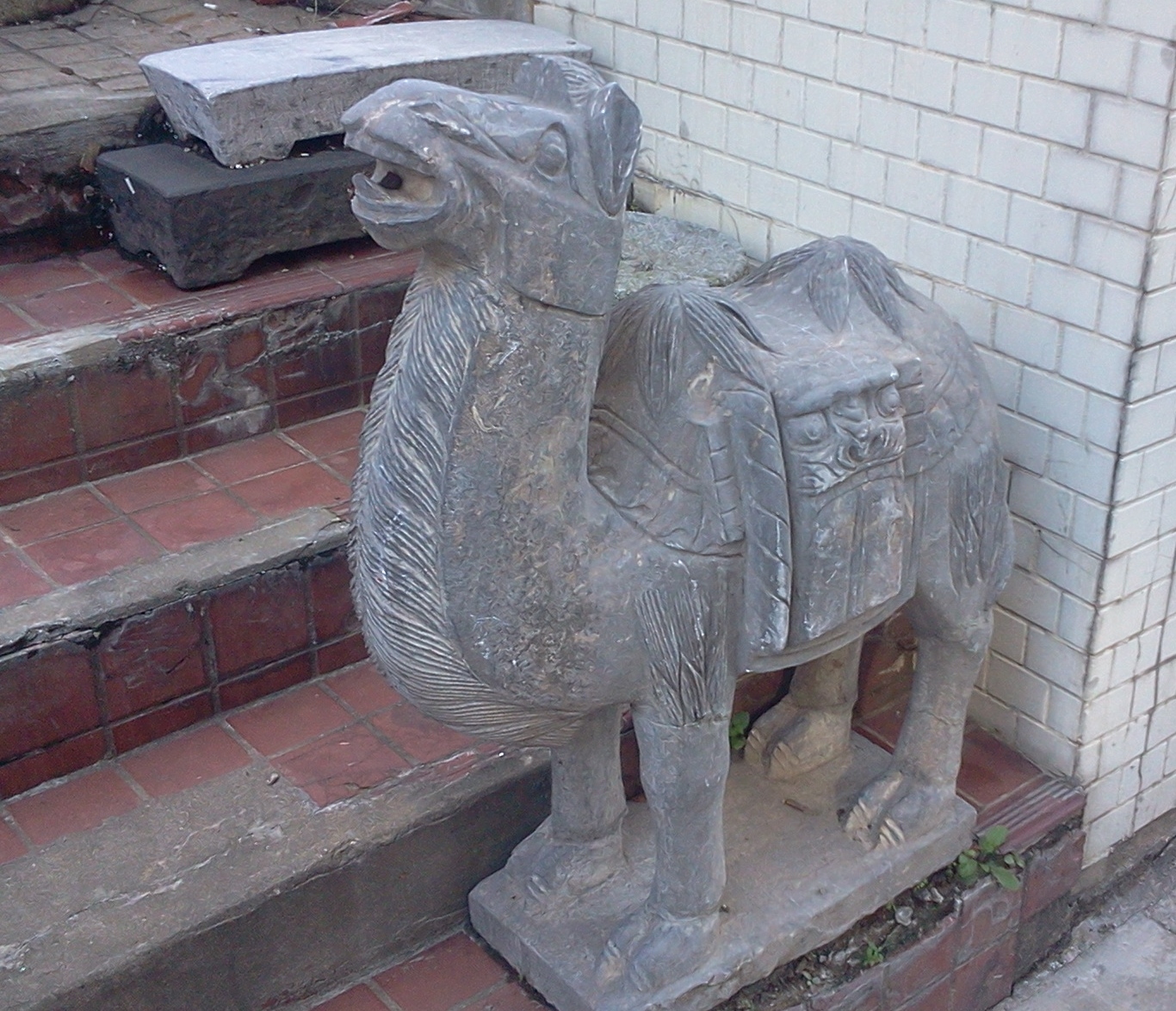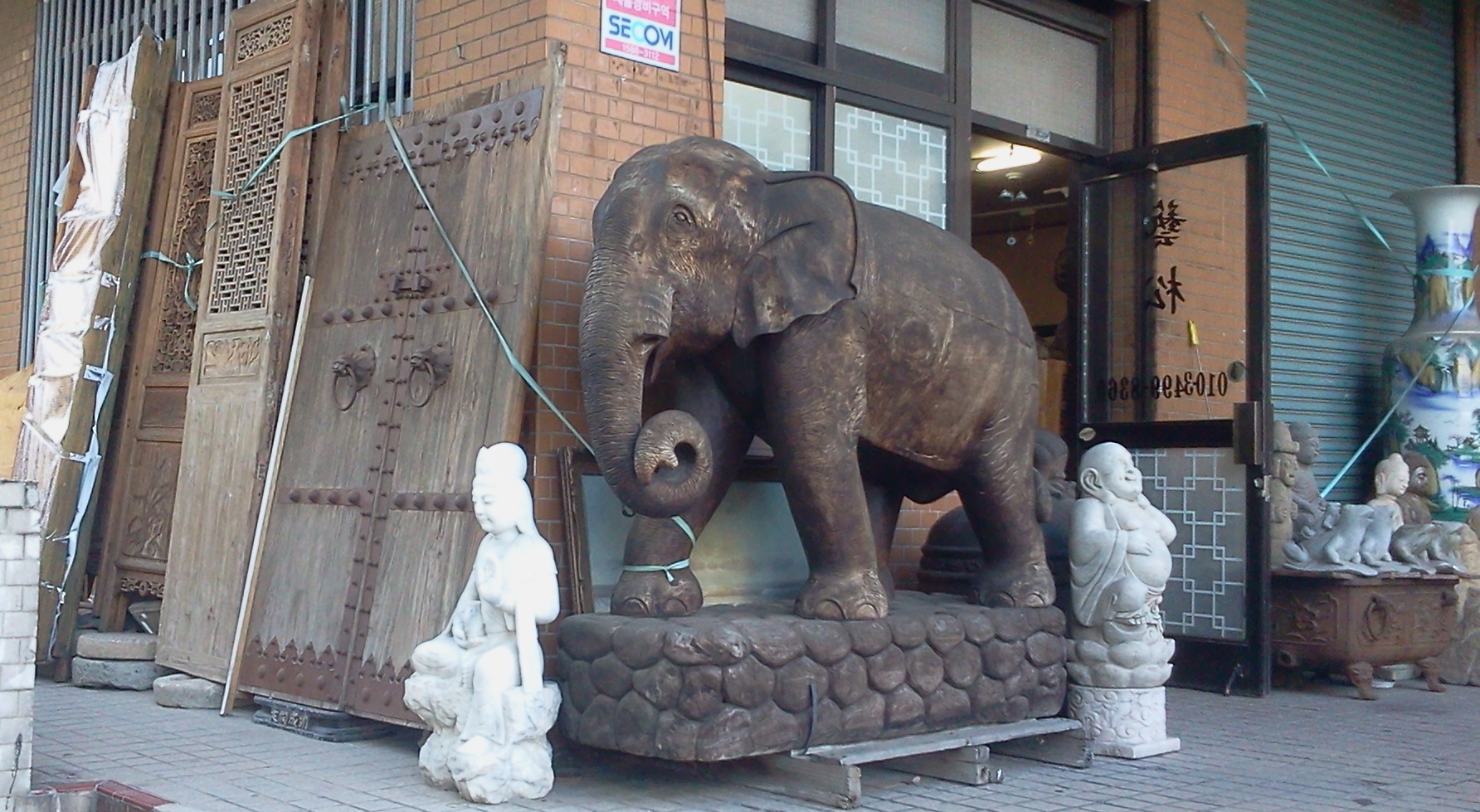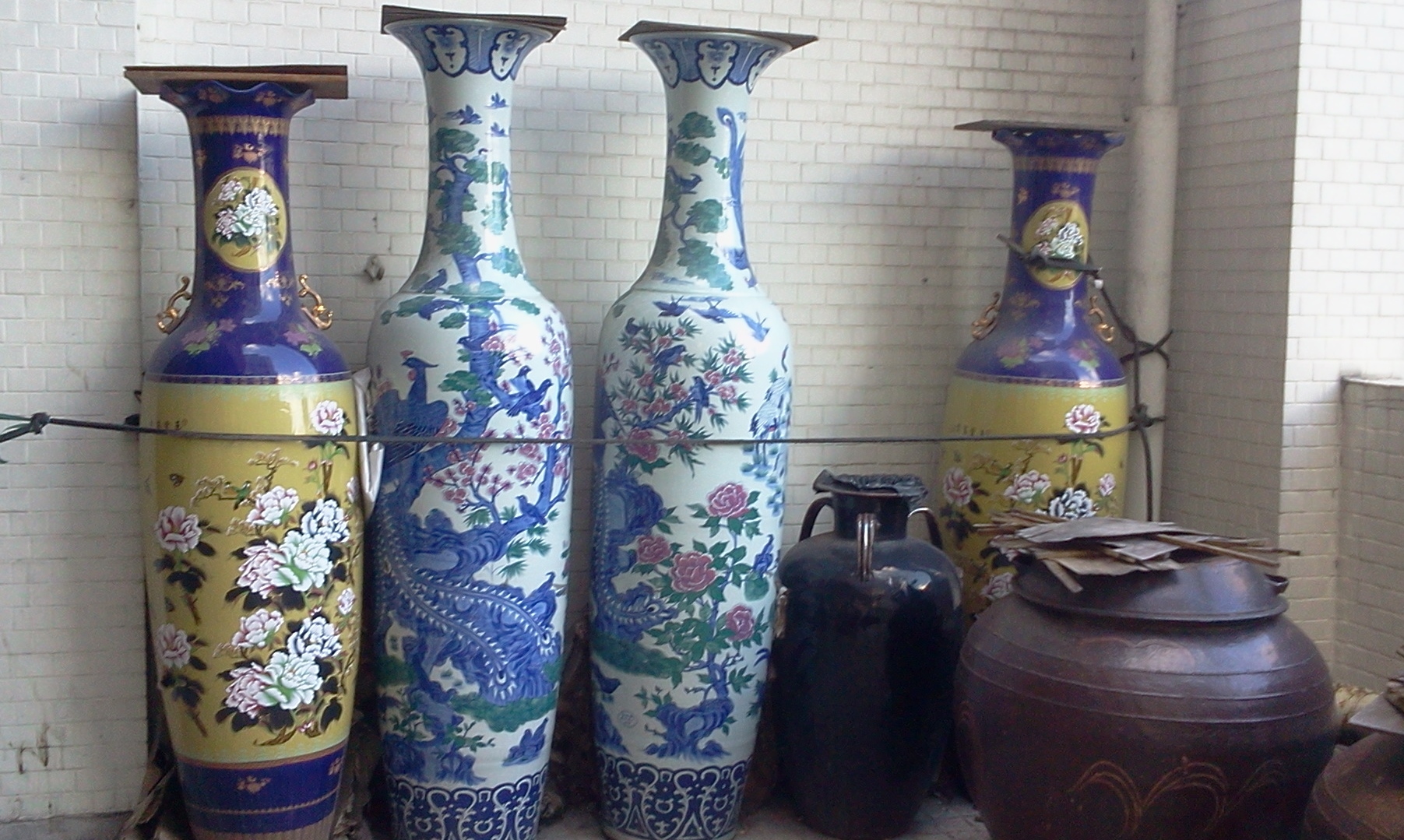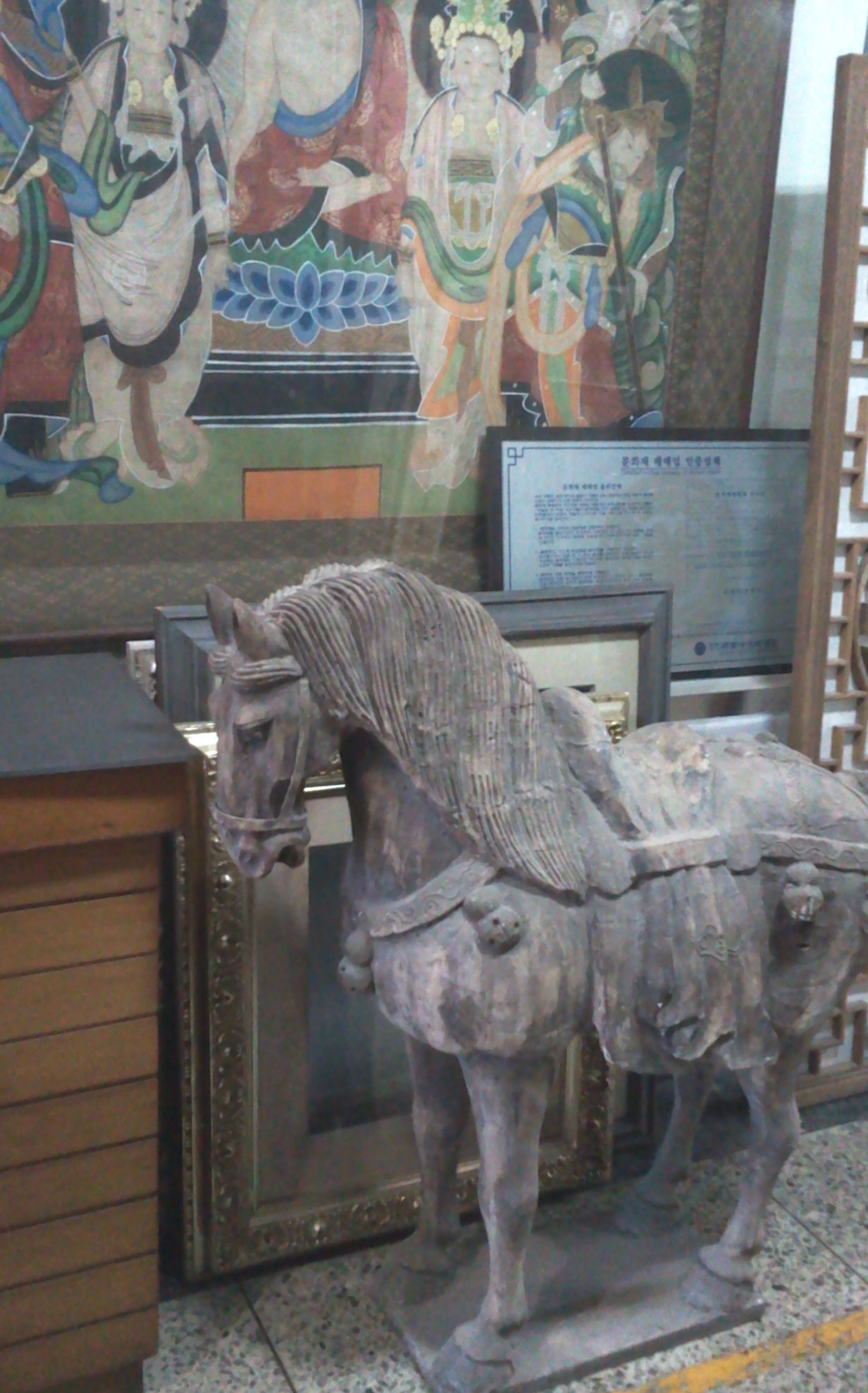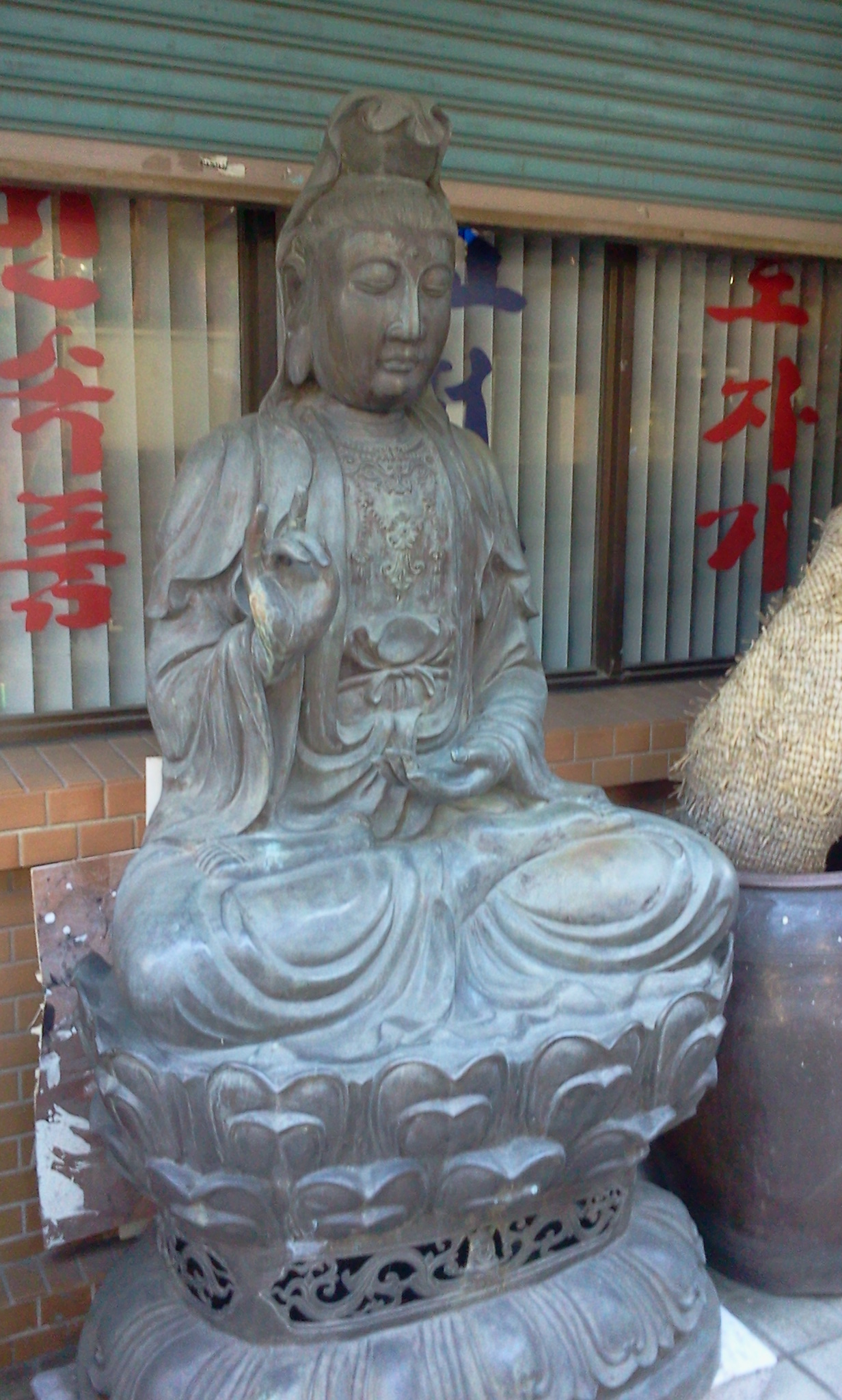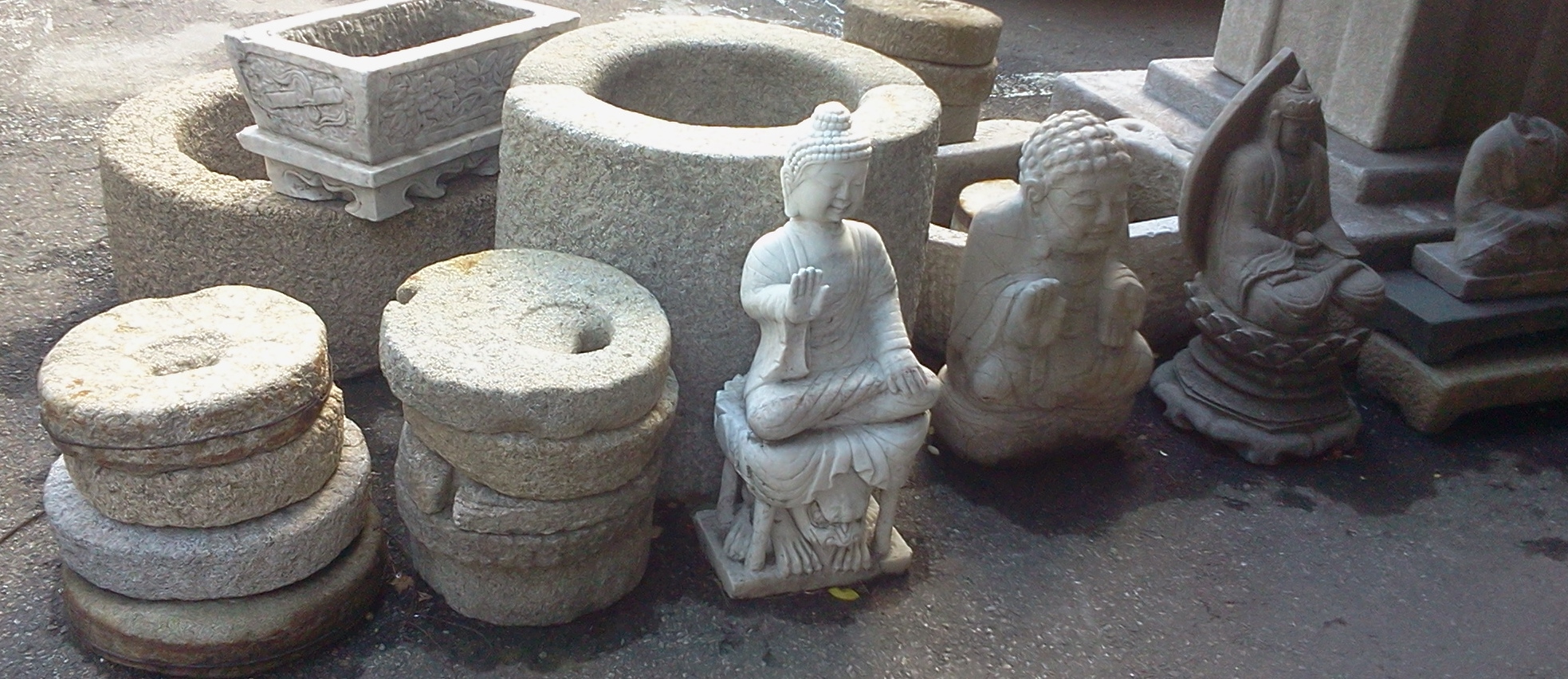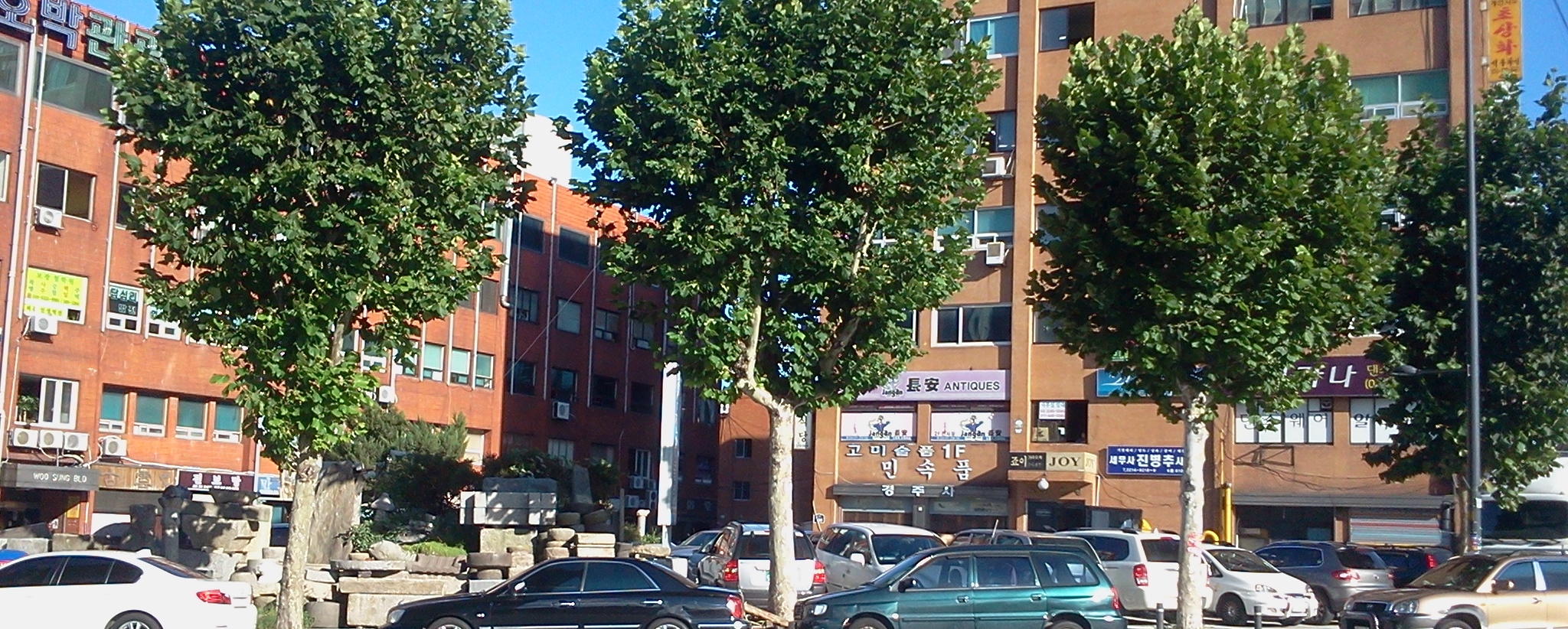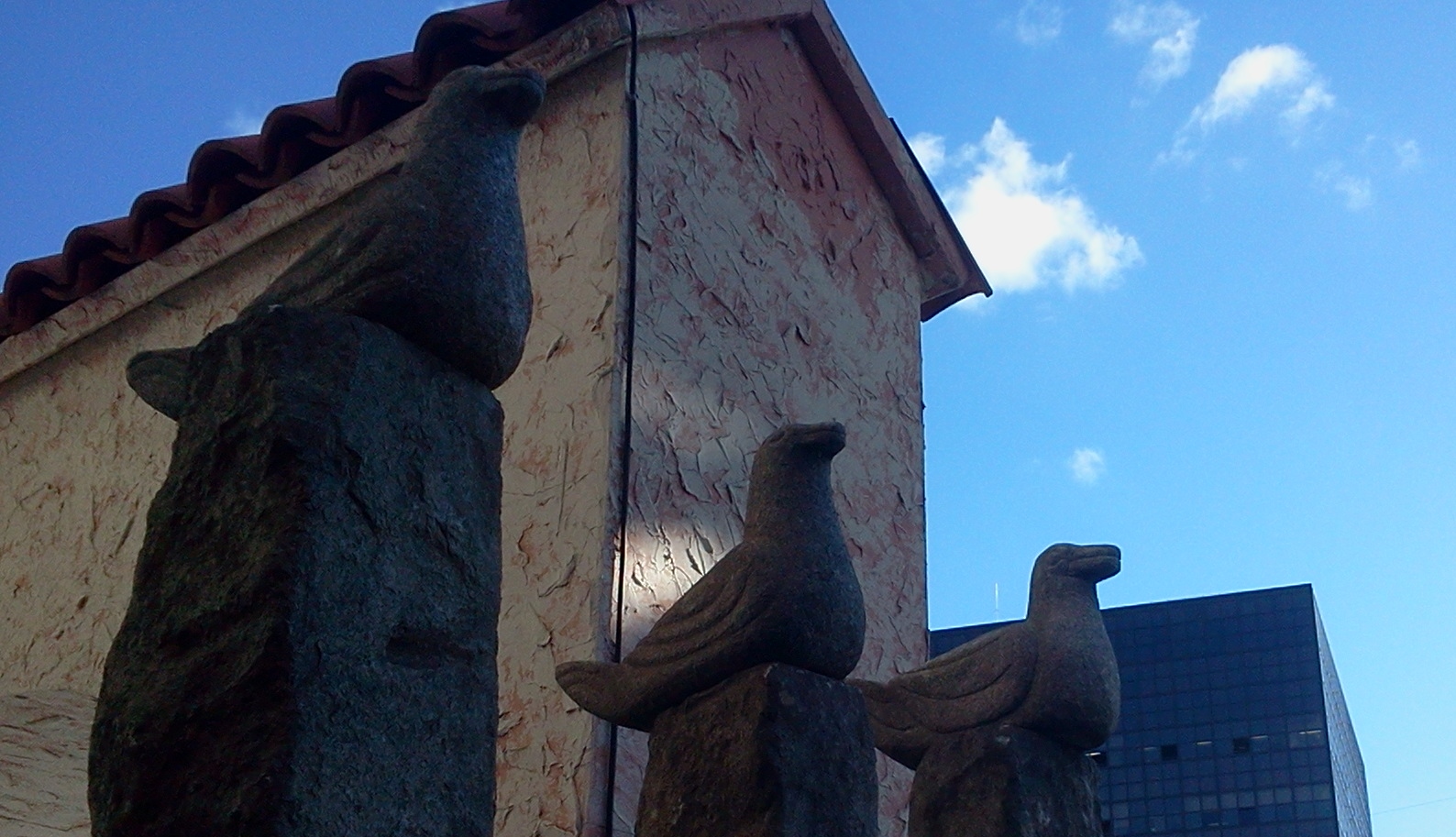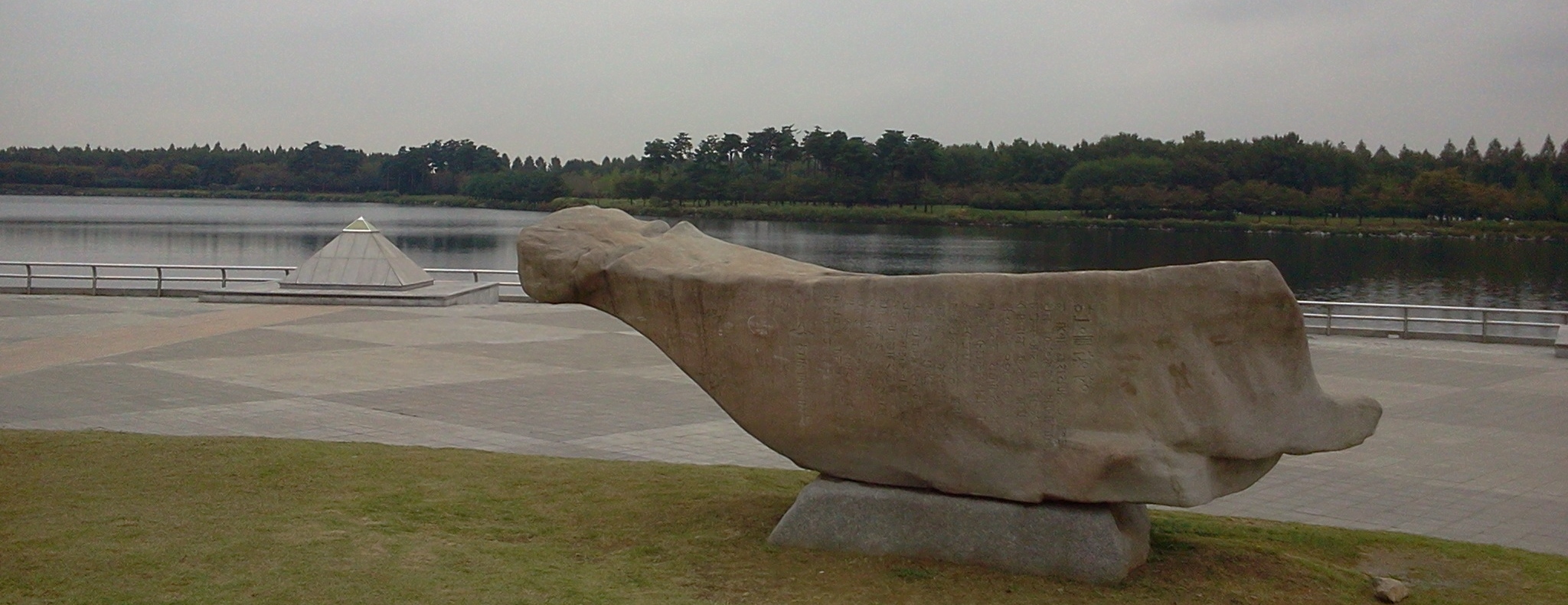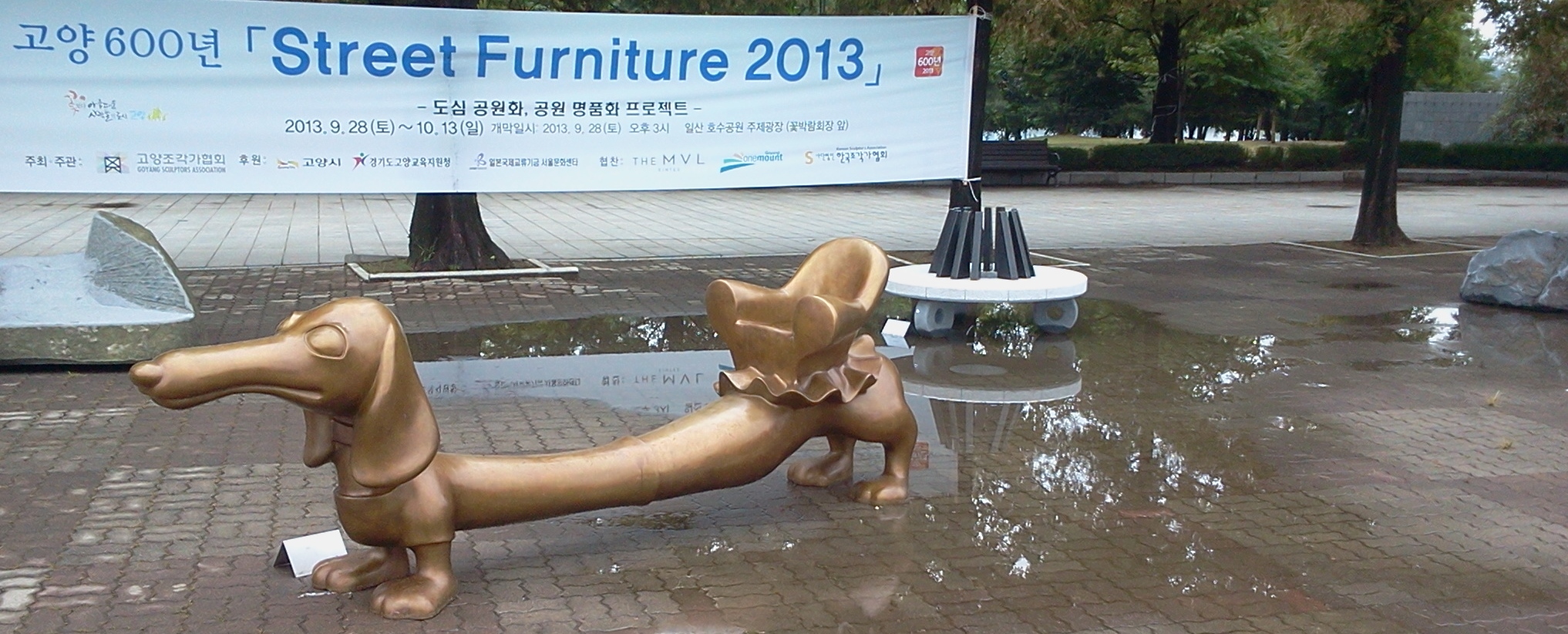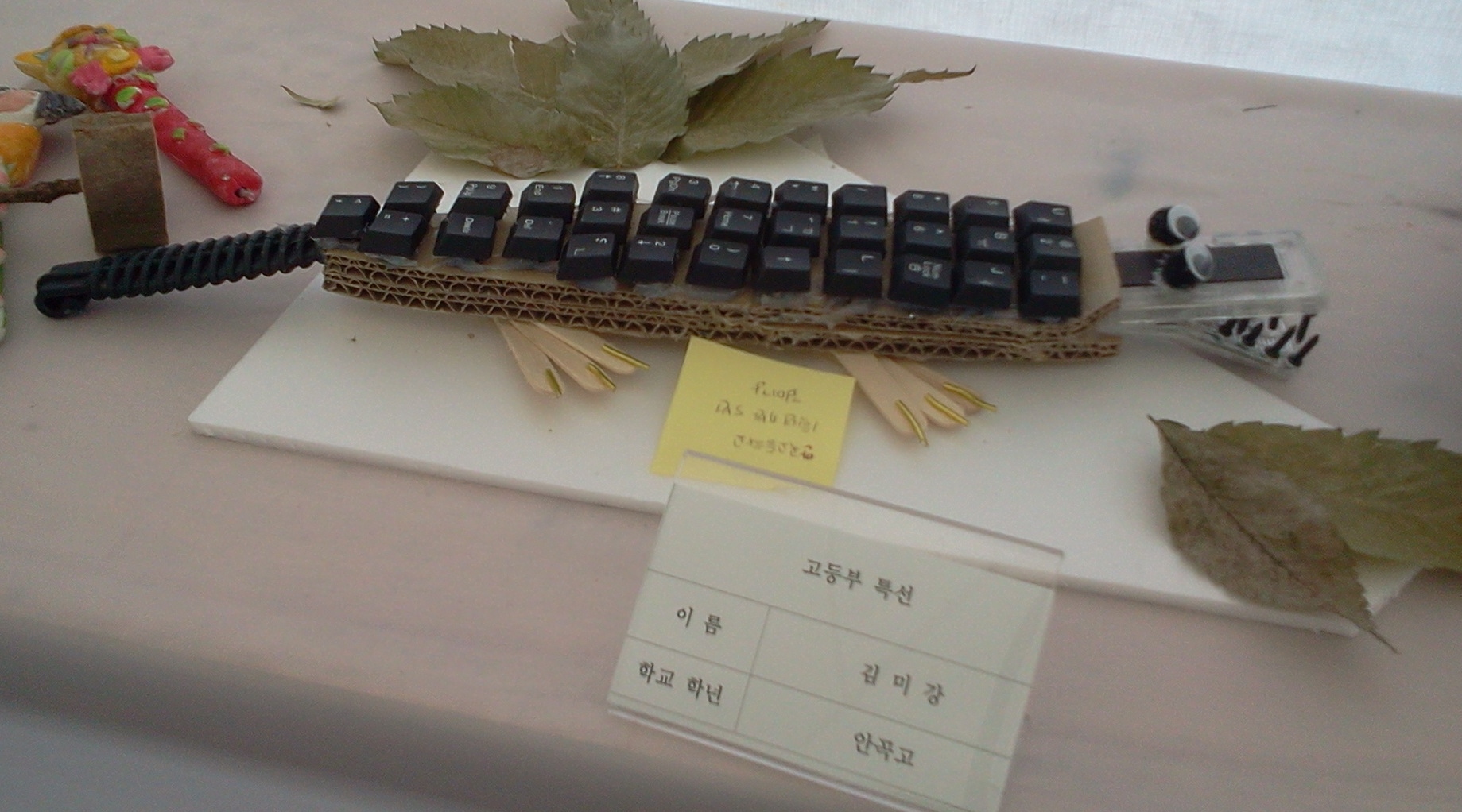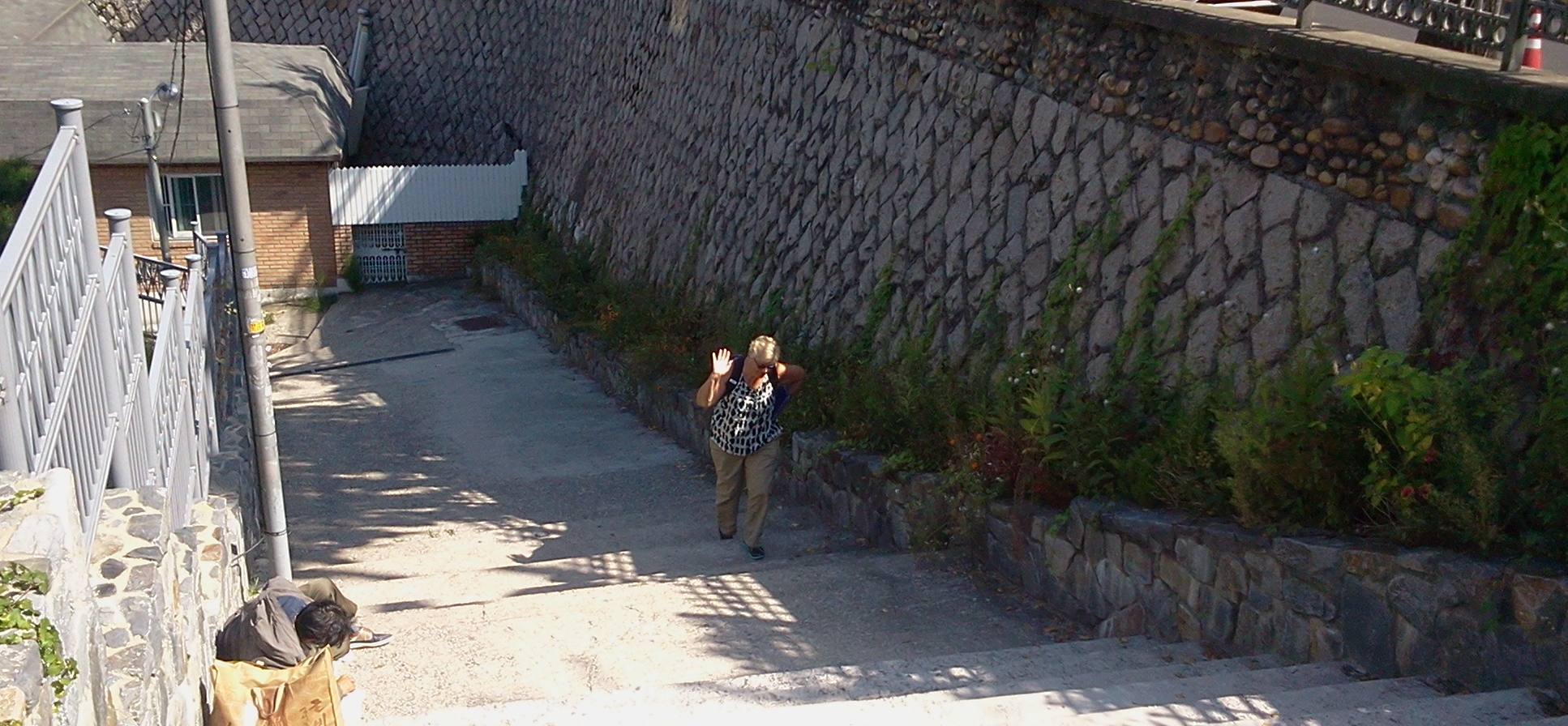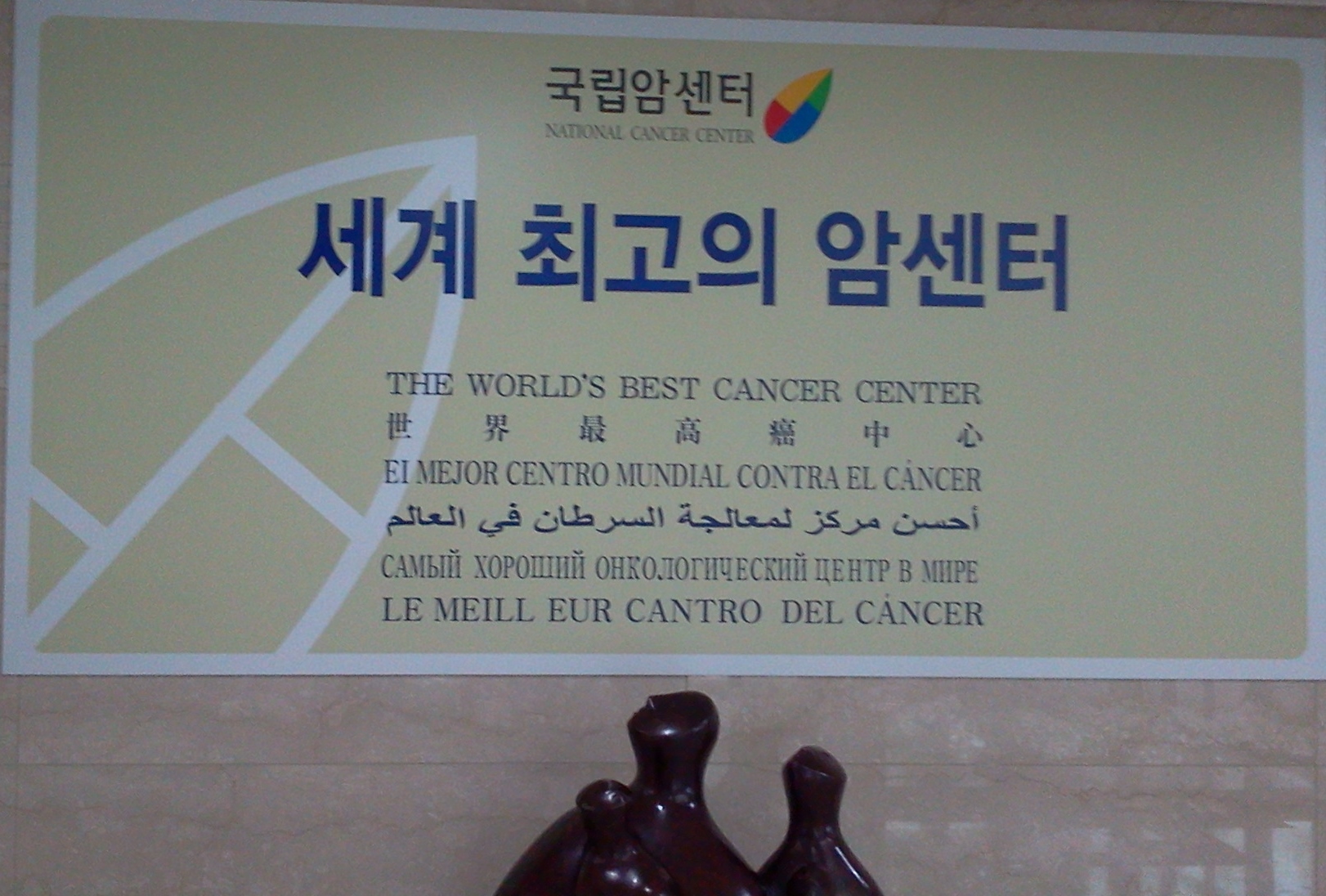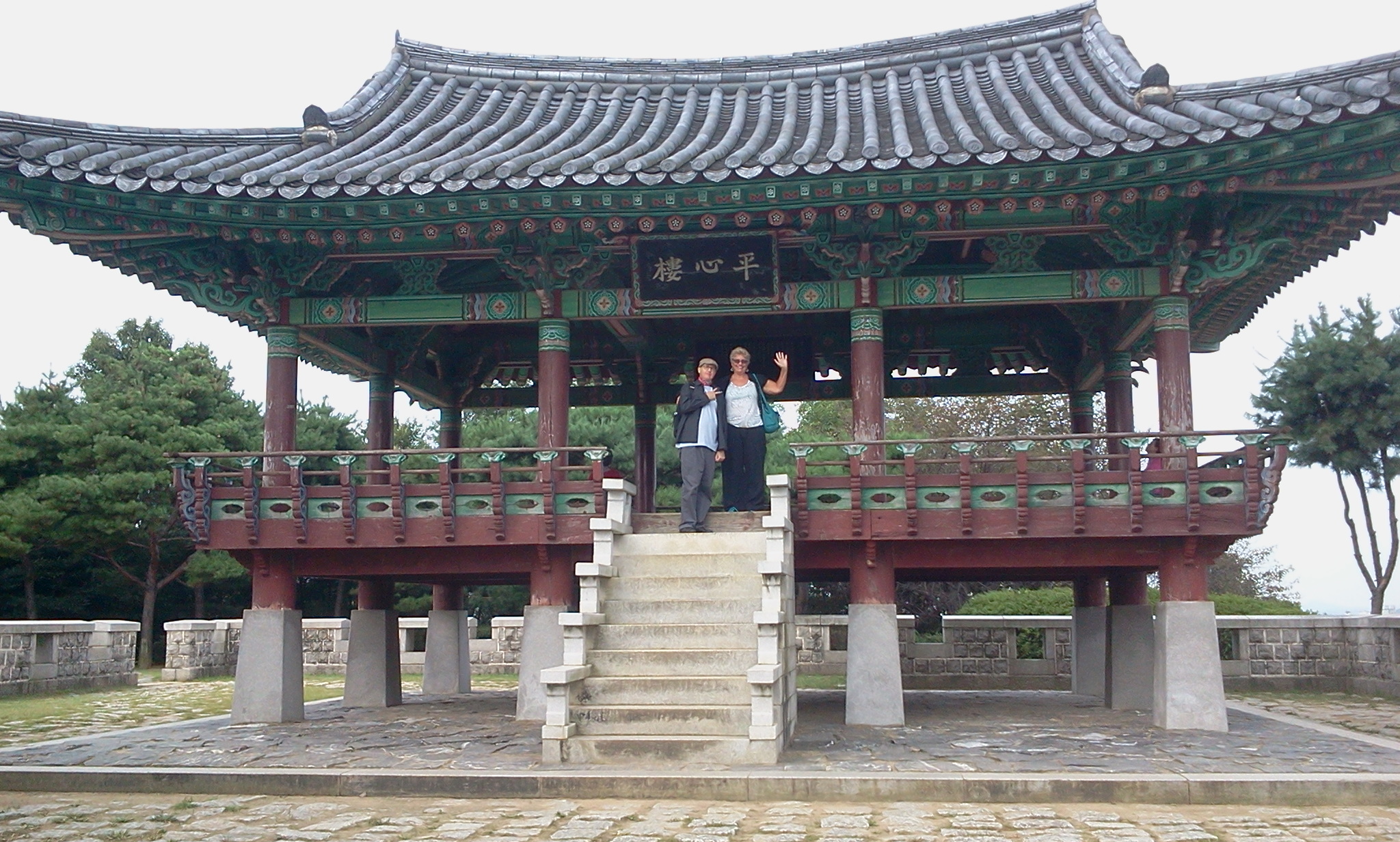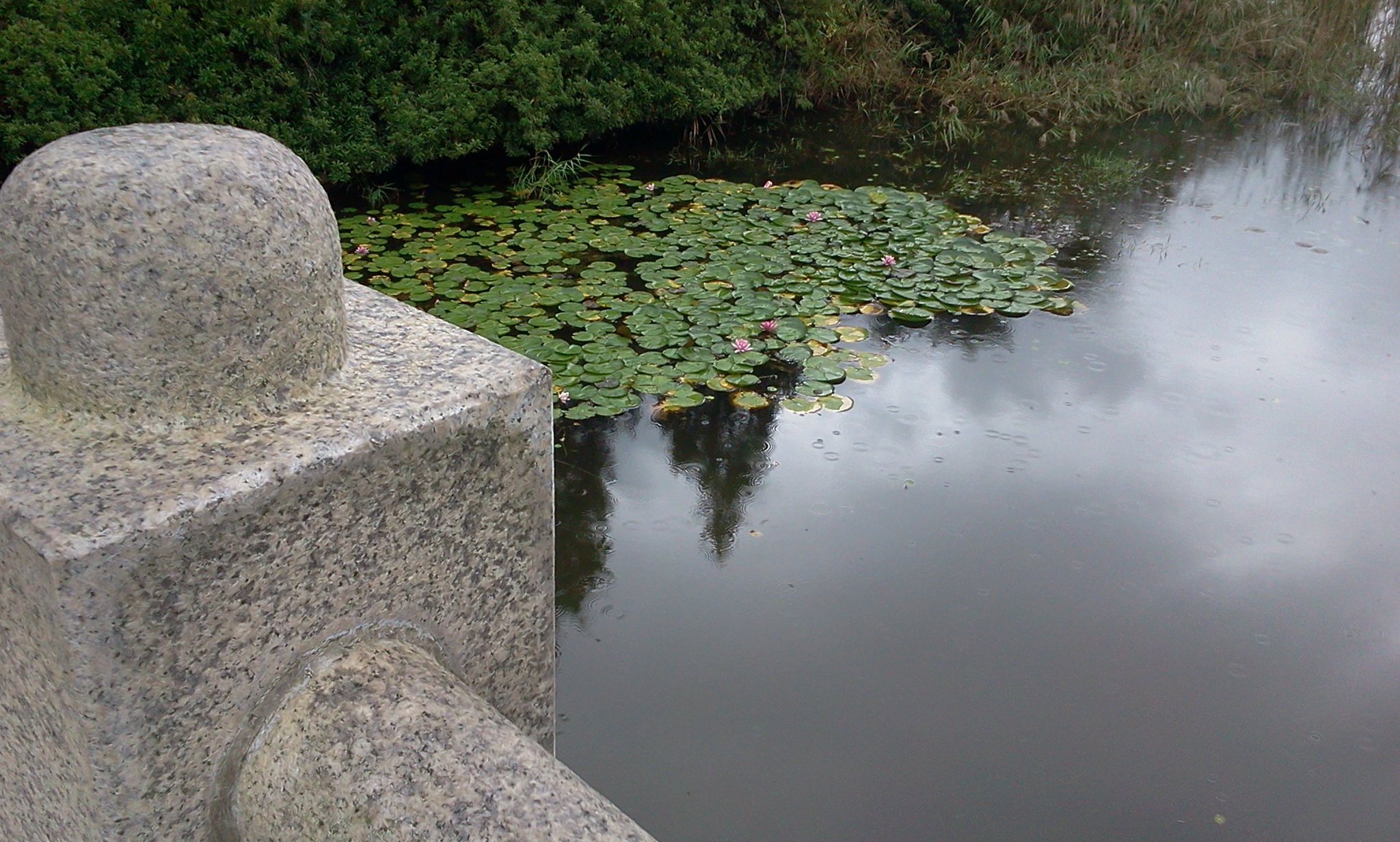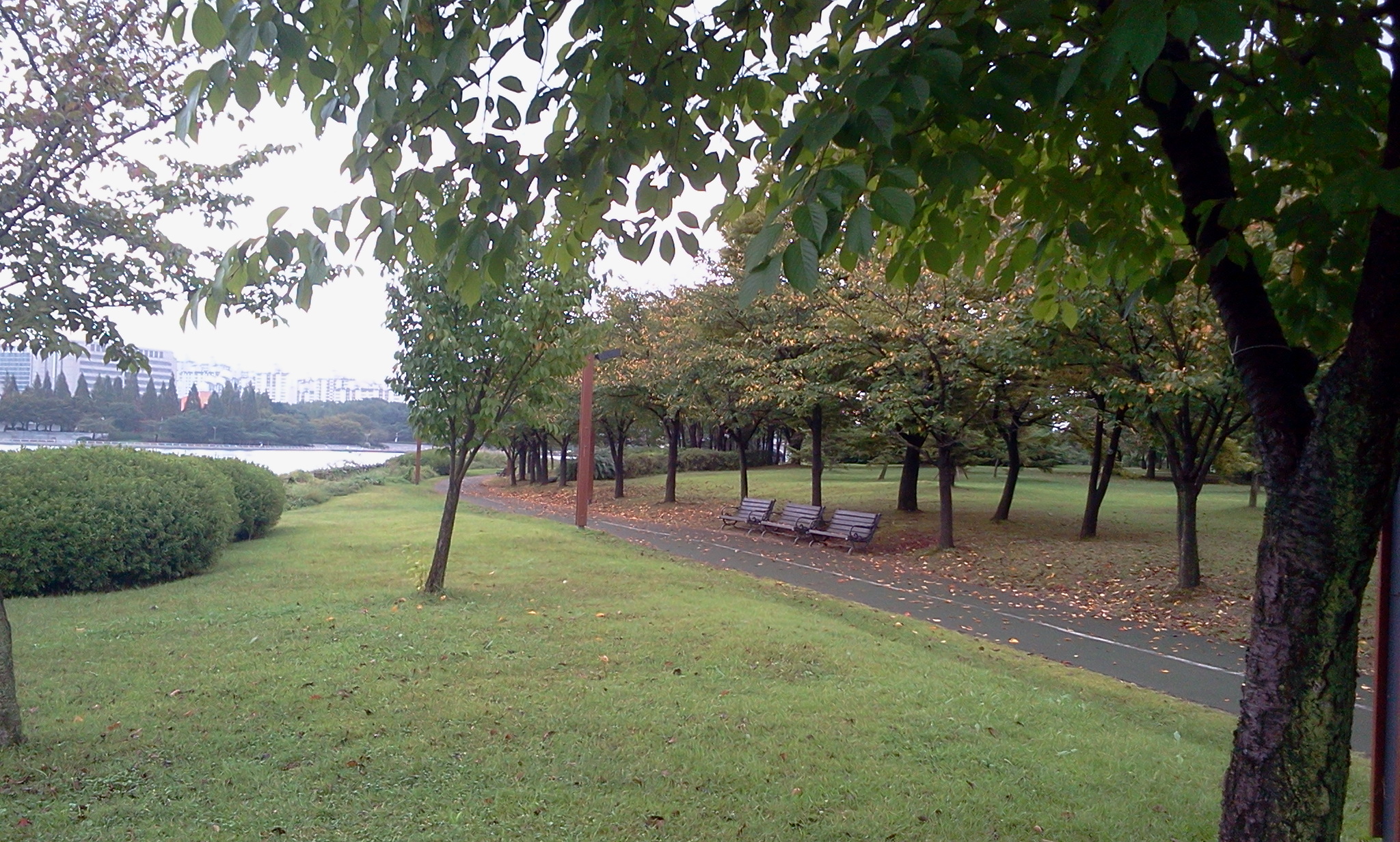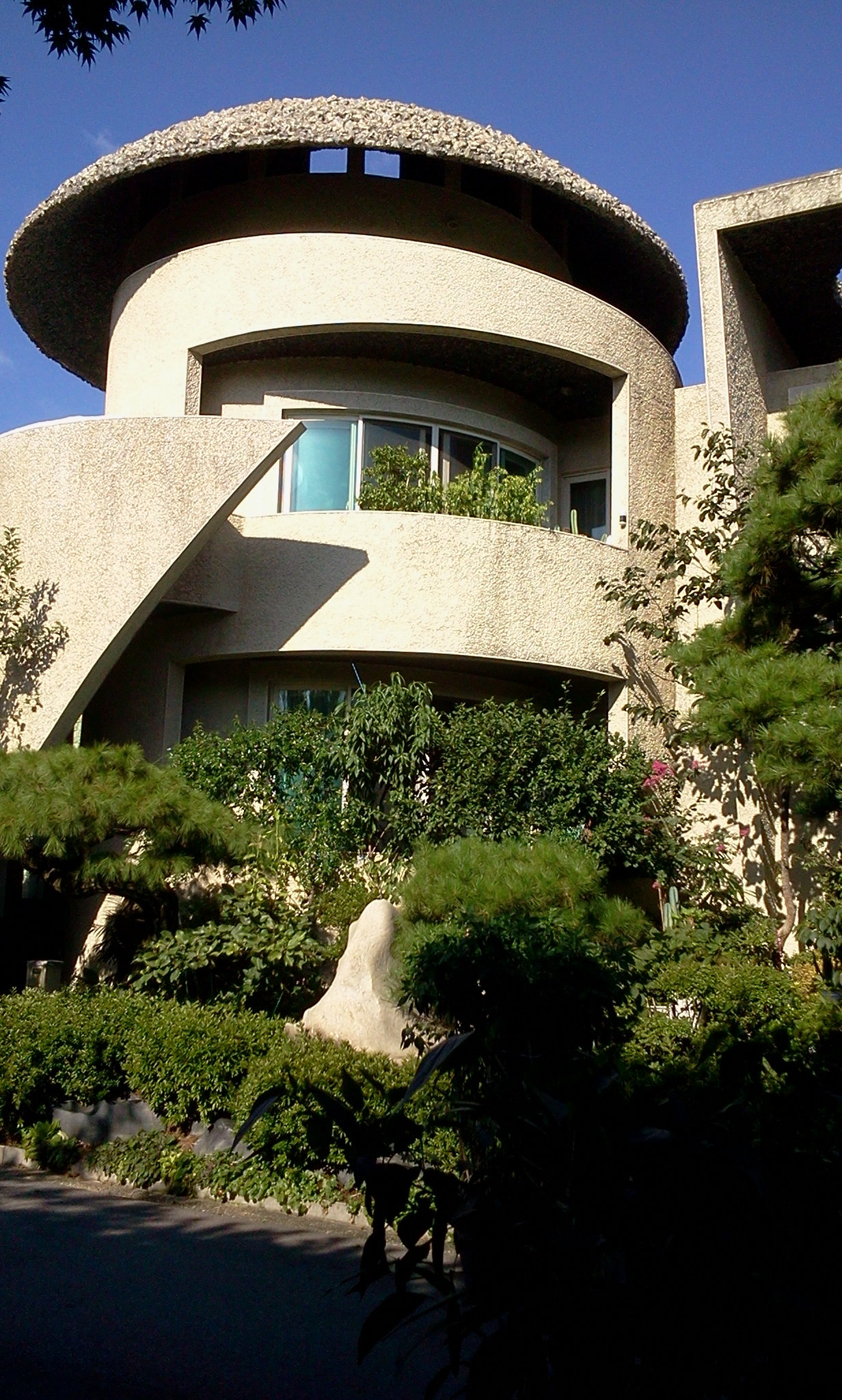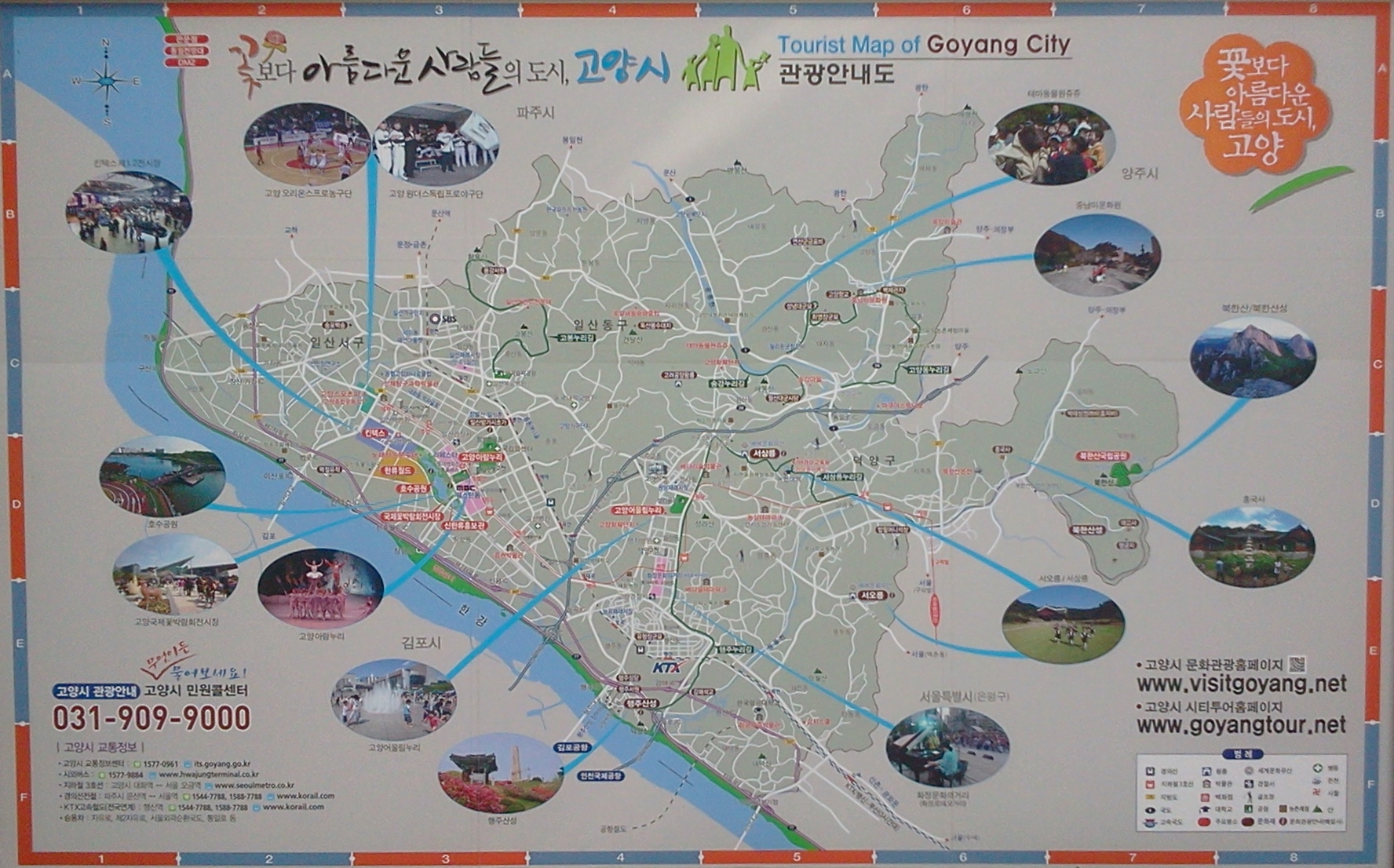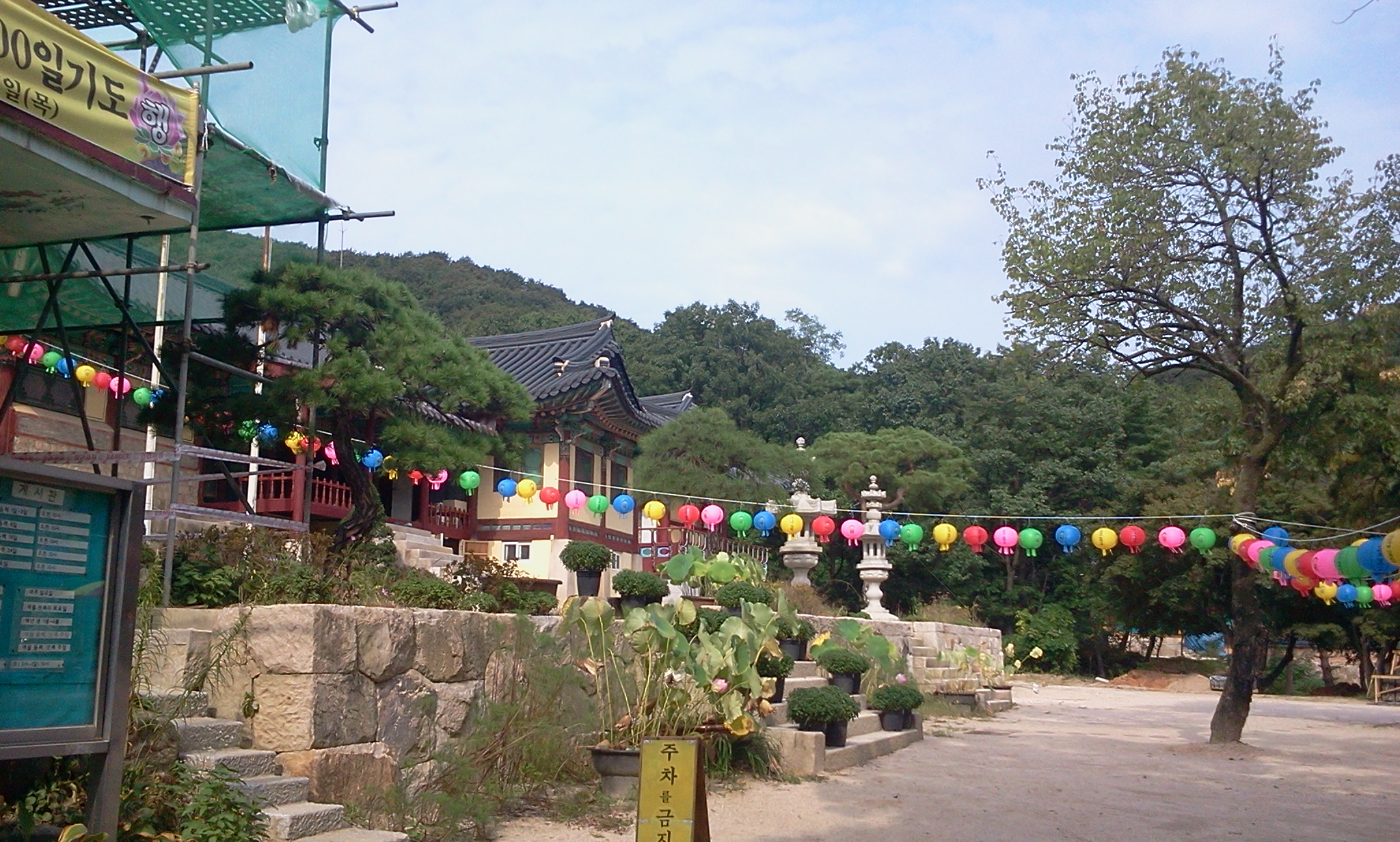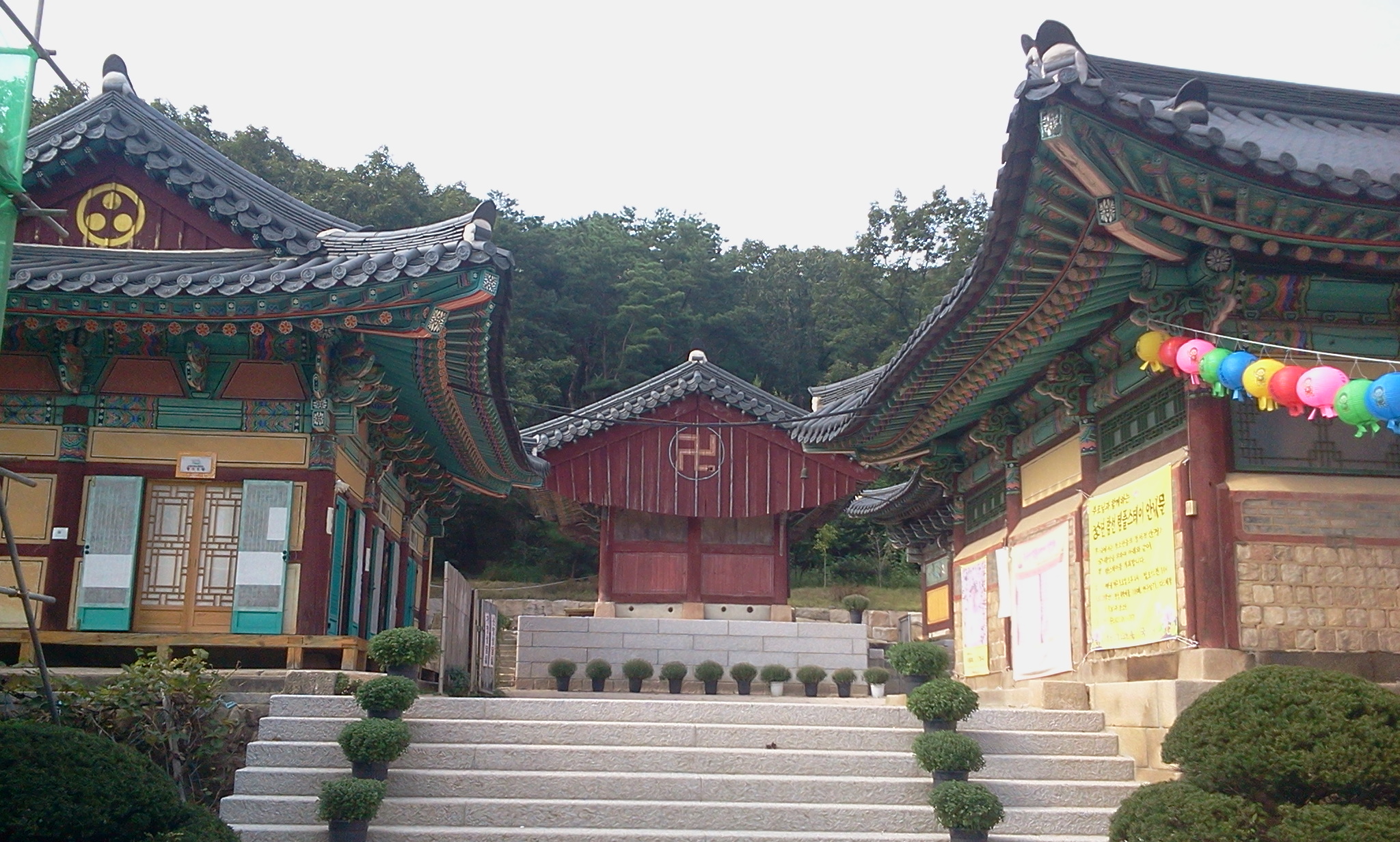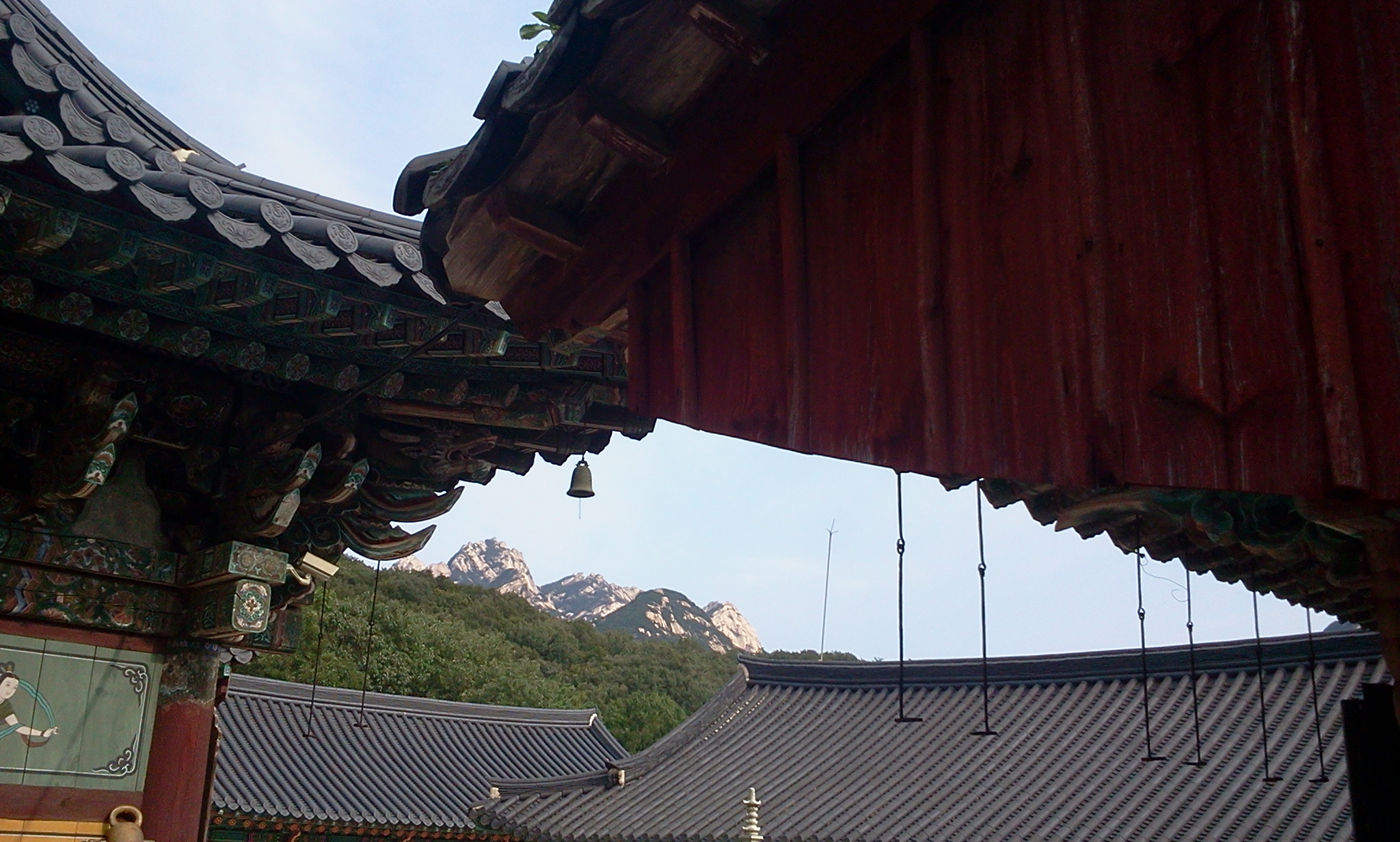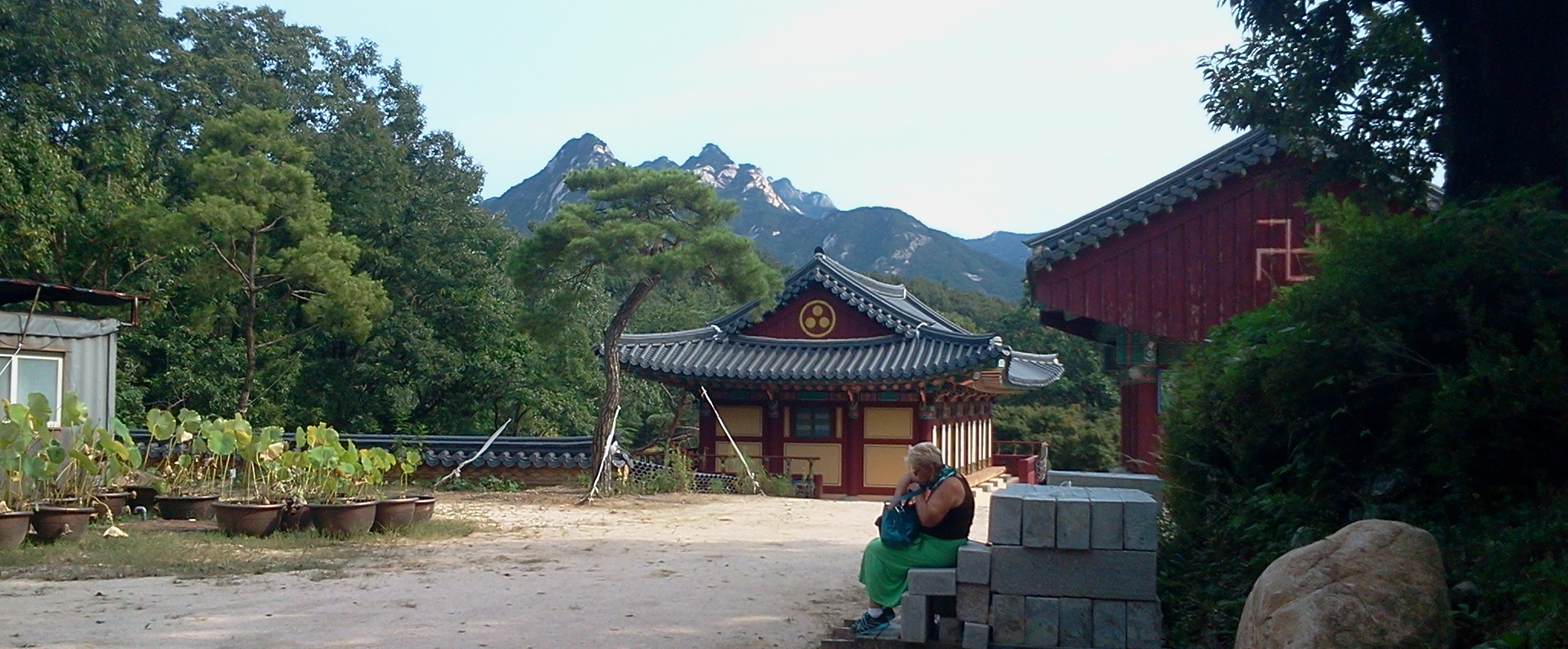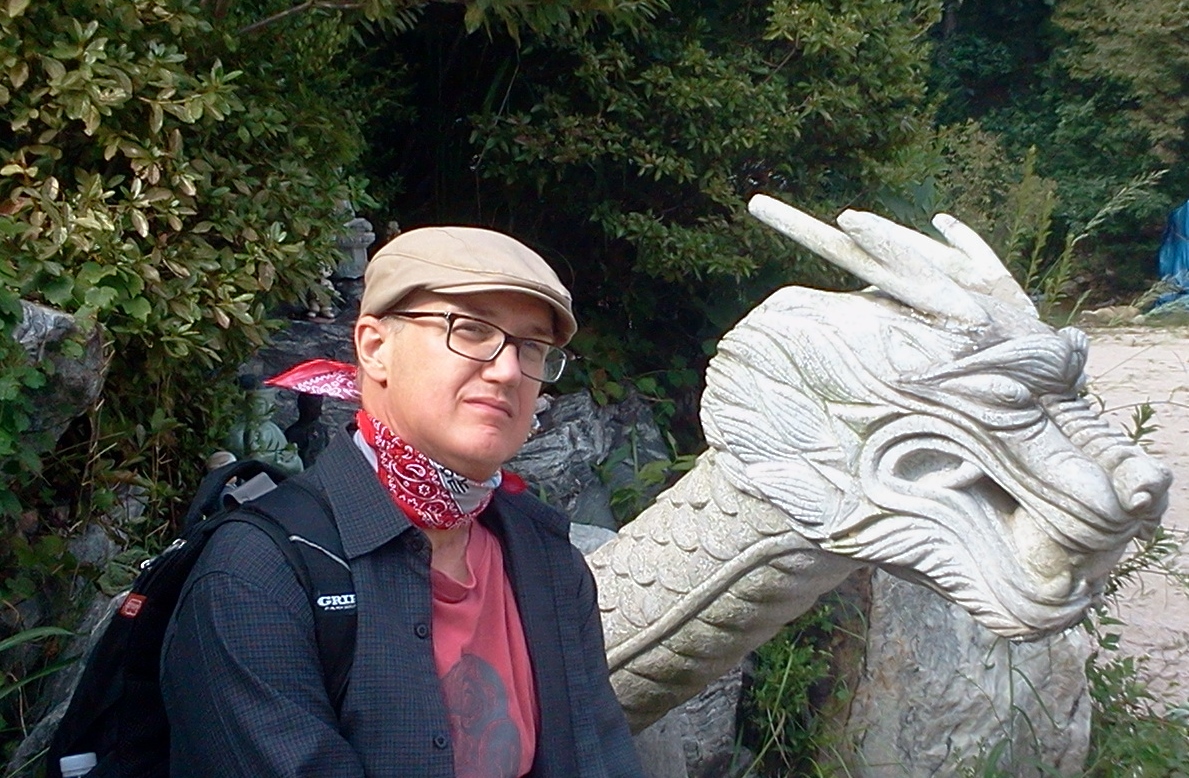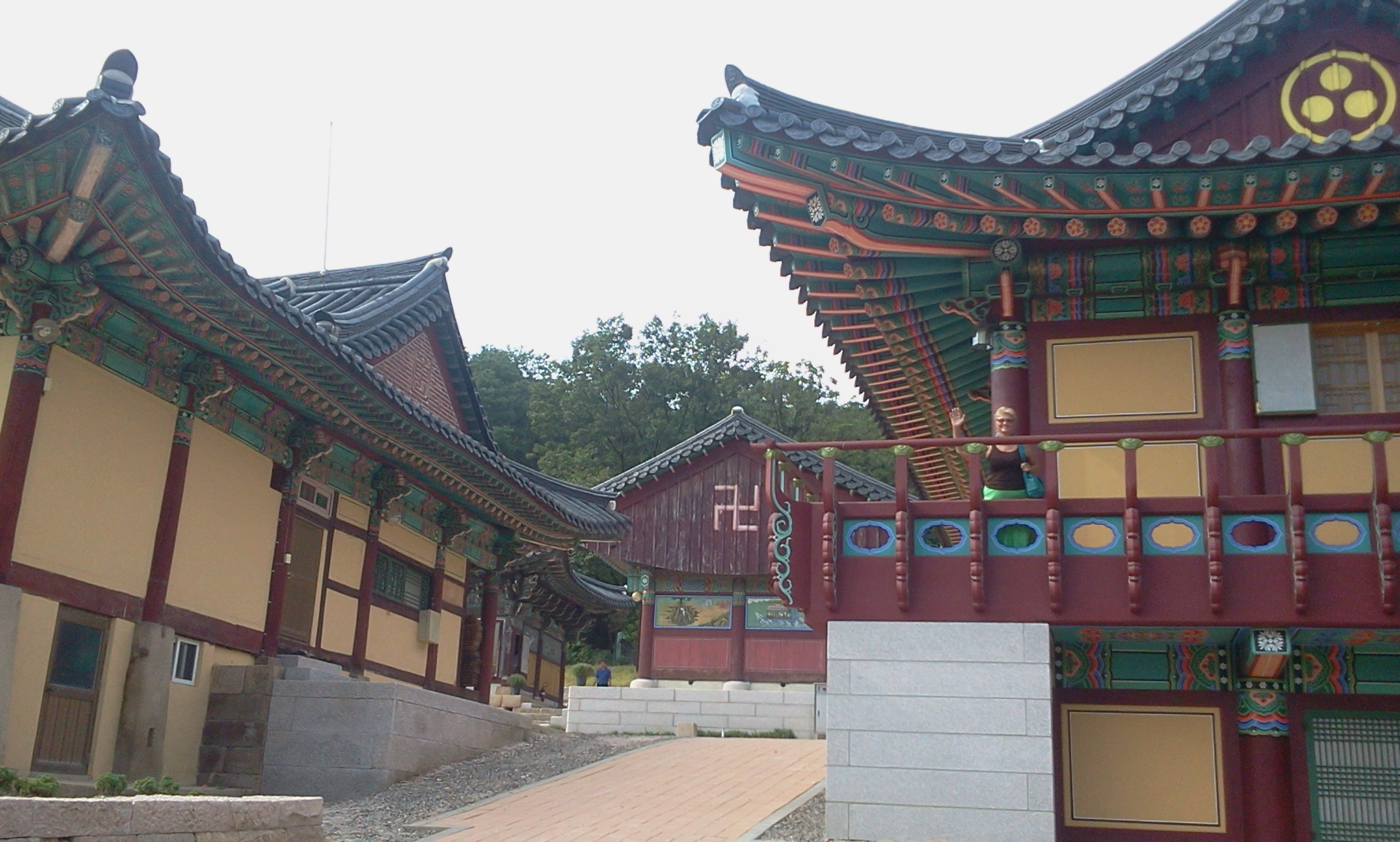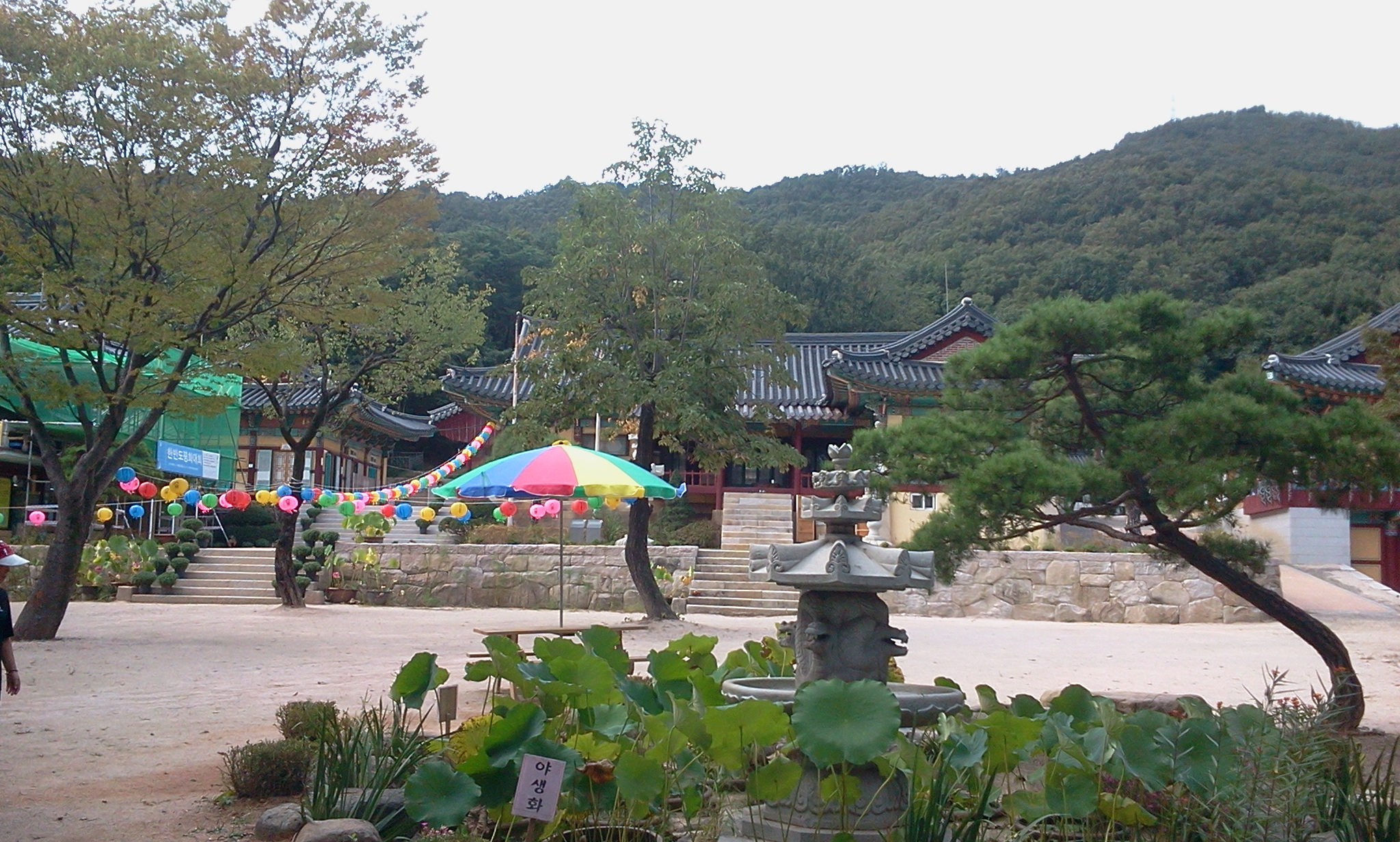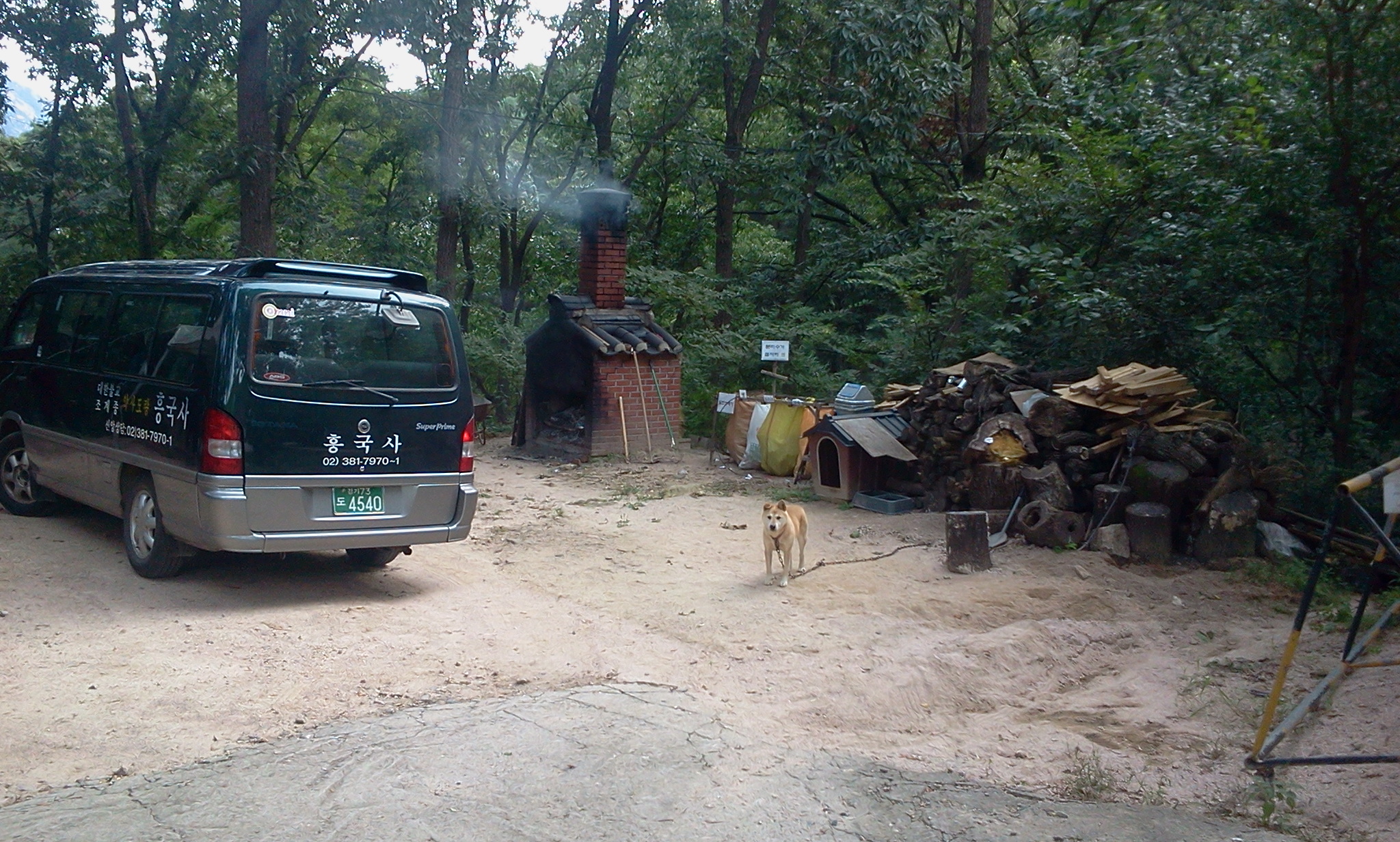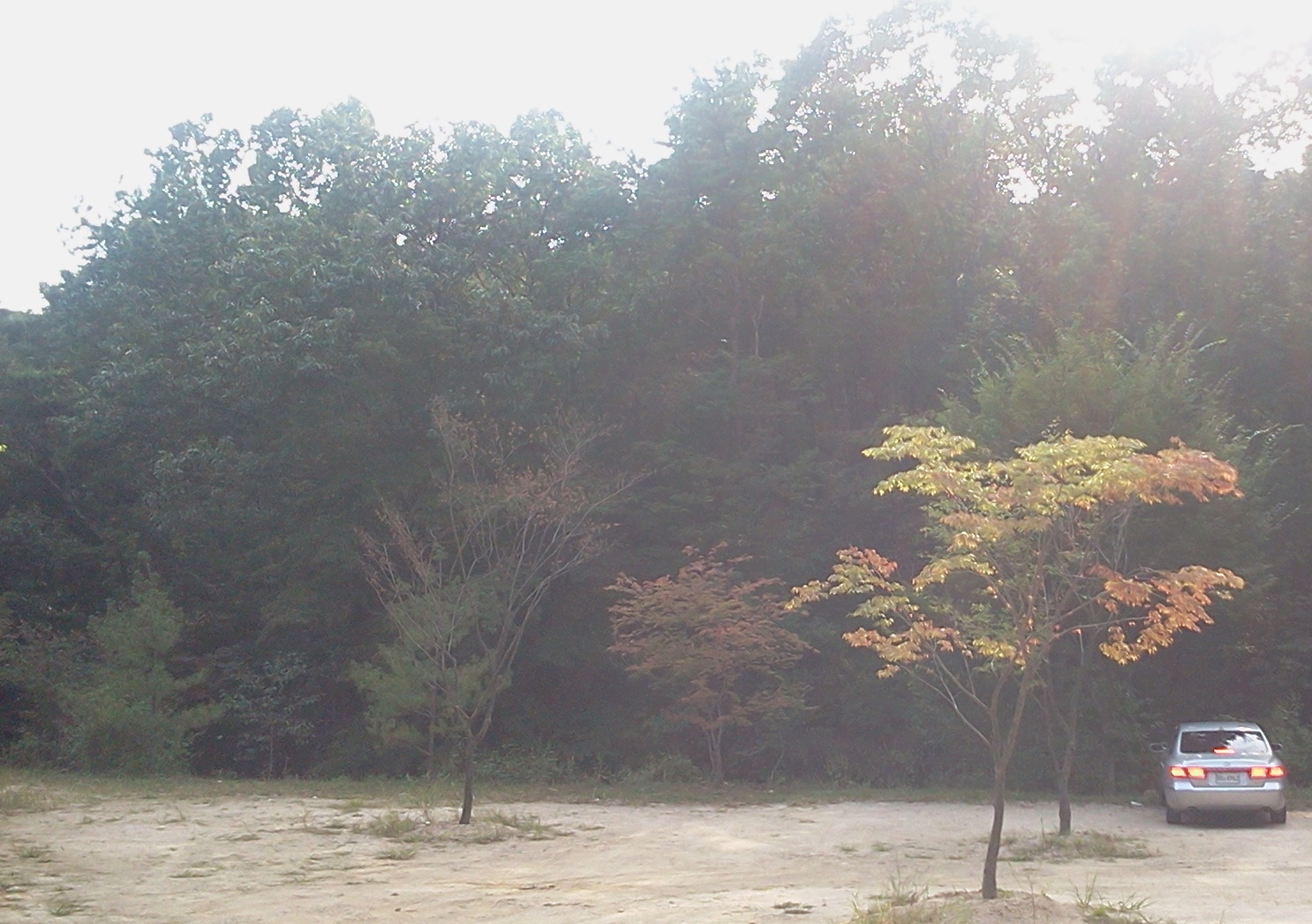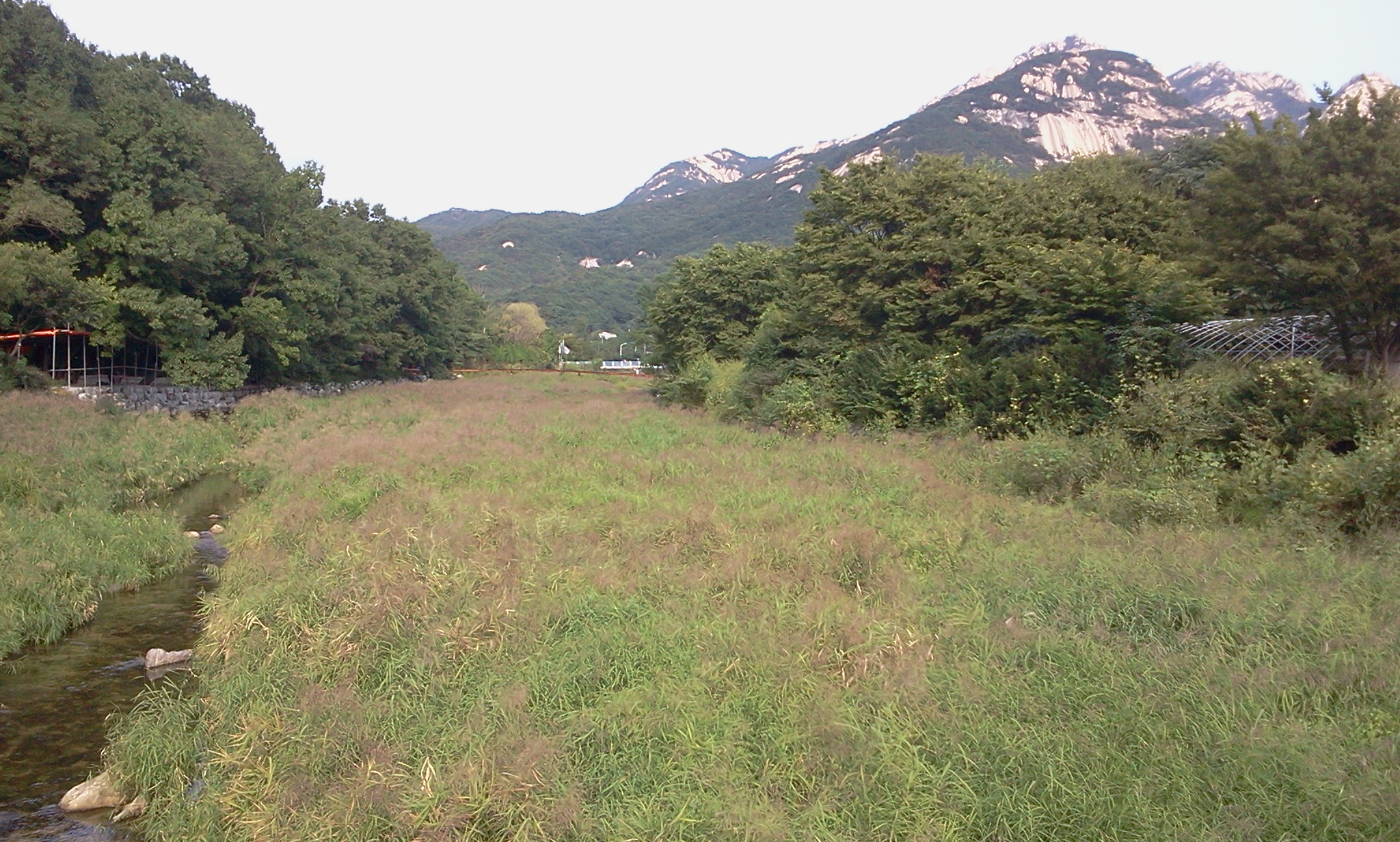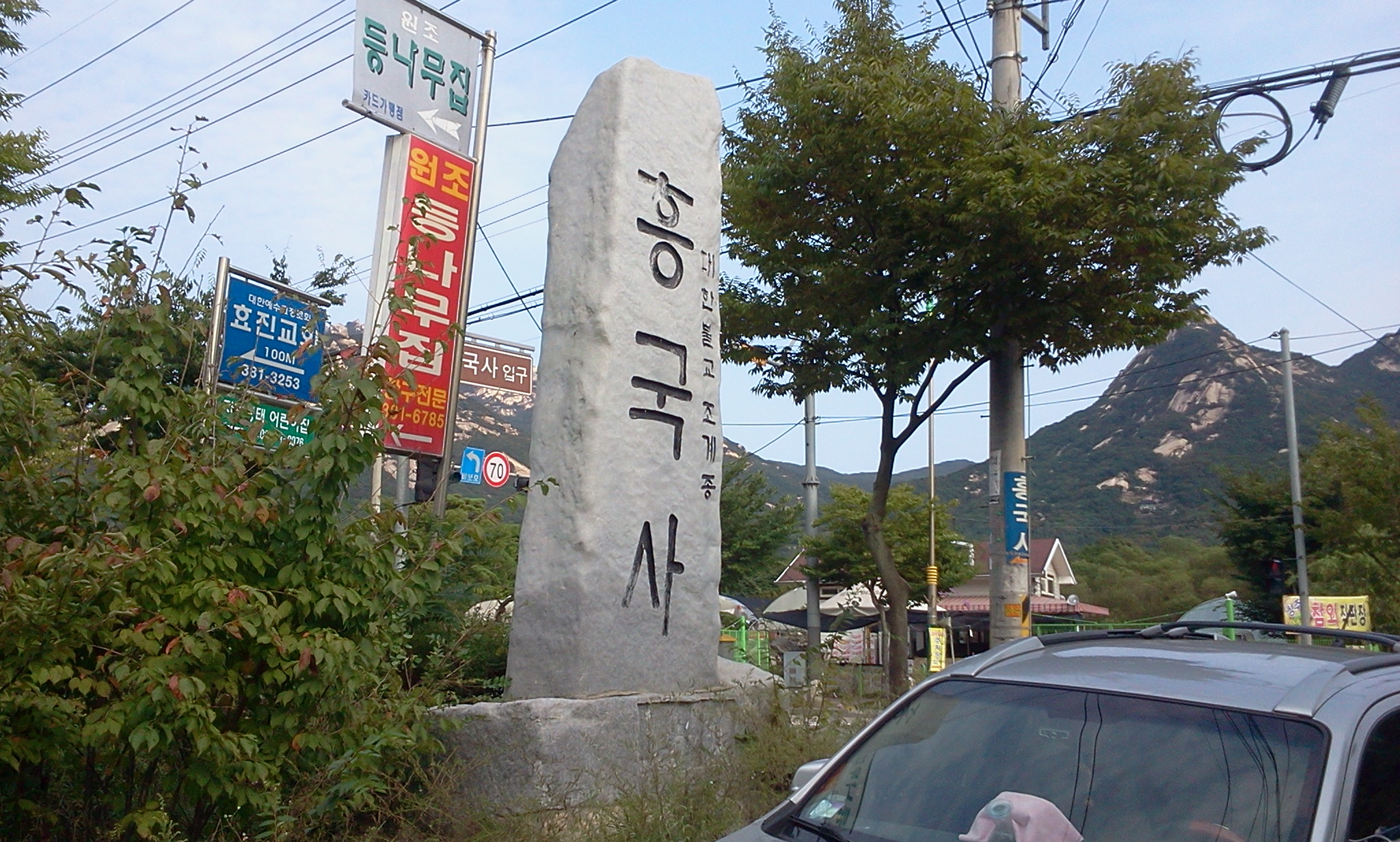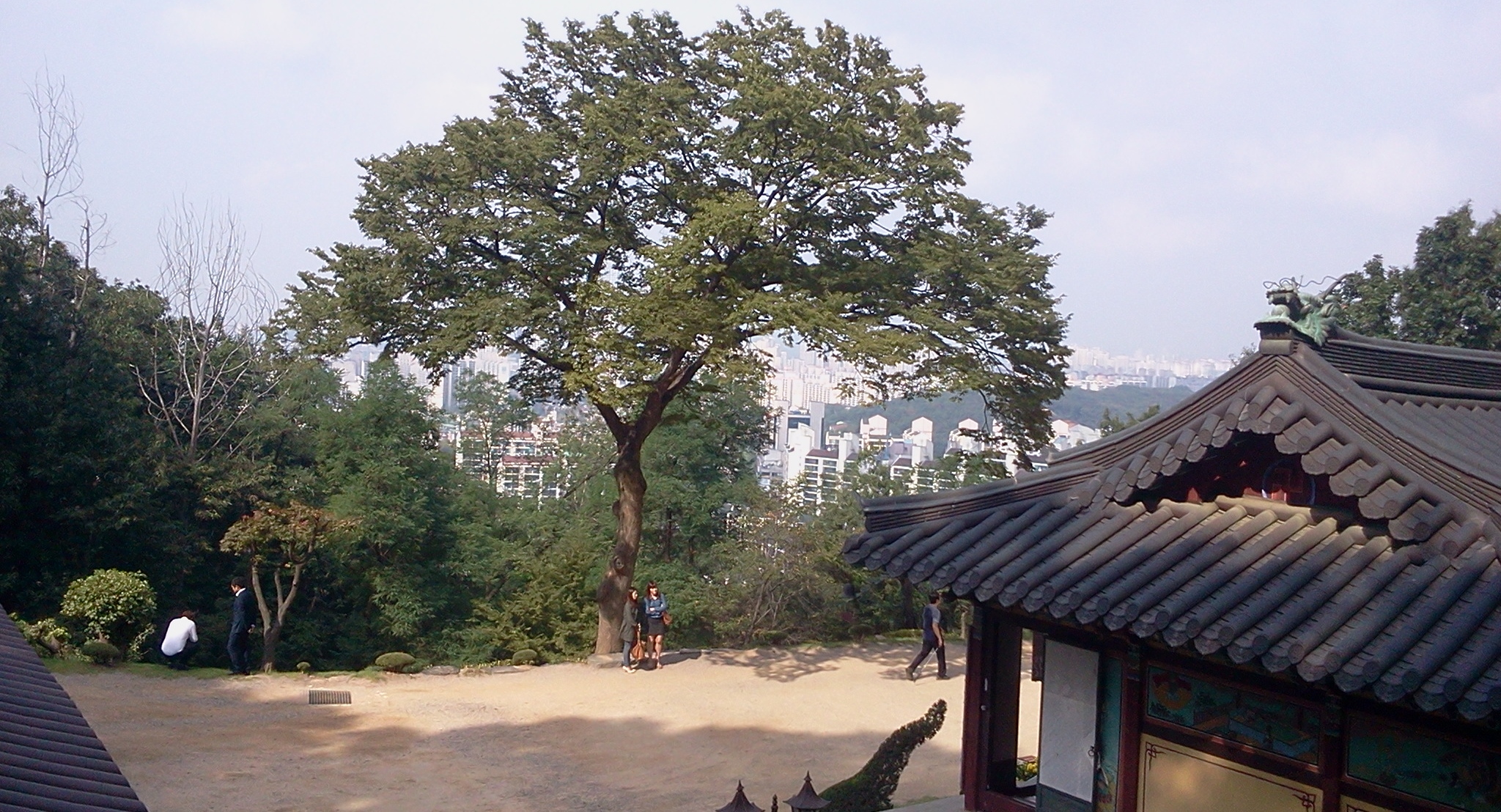Caveat: A Non-Orientable Surface
Caveat: 훌륭한 학생이라 믿어주면 그들은 그것을 증명해준다
This aphorism was on posted on the wall of the staff room, not far from my desk. I decided to figure it out.
훌륭한 학생이라 믿어주면
be-brilliant-PASTPART student-be-[?] believe-give-COND
그들은 그것을 증명해준다
that-PL-TOPIC that-thing-OBJ confirm-give-PRES
When you believe your students are brilliant they comfirm it.
I have no idea how the -이라 ending on the first clause’s be-verb (copula) works, but I’ve always had the impression the copula forms with -ㄹ- are a sort of residual subjunctive that doesn’t appear in any other forms, in which case it makes sense. I’m sure it has some specific grammatical name, but I don’t know what it is.
Anyway it’s a pretty good aphorism to see on the wall of a school staff room.
[daily log: walking, 6.5 km]
Caveat: What does the fox say?
Apparently this is a thing, right now.
It was circulating on the facebook this morning, when I looked inside. I'd heard a reference to it yesterday, somewhere, too, and wondered what it was about. Now I know.
What I'm listening to right now.
Ylvis, "The Fox."
My very first thought when I watched it was this: I have got to show this to my students – it's the perfect blend of ironic pop sensibilities and kindergarten English. I especially like the grandfather reading the storybook, in the video.
Lyrics:
Dog goes woof, cat goes meow.
Bird goes tweet, and mouse goes squeek.
Cow goes moo. Frog goes croak, and the elephant goes toot.
Ducks say quack and fish go blub, and the seal goes ow ow ow.
But there's one sound that no one knows…
WHAT DOES THE FOX SAY?
Ring-ding-ding-ding-dingeringeding!
Gering-ding-ding-ding-dingeringeding!
Gering-ding-ding-ding-dingeringeding!
WHAT THE FOX SAY?
Wa-pa-pa-pa-pa-pa-pow!
Wa-pa-pa-pa-pa-pa-pow!
Wa-pa-pa-pa-pa-pa-pow!
WHAT THE FOX SAY?
Hatee-hatee-hatee-ho!
Hatee-hatee-hatee-ho!
Hatee-hatee-hatee-ho!
WHAT THE FOX SAY?
Joff-tchoff-tchoff-tchoffo-tchoffo-tchoff!
Joff-tchoff-tchoff-tchoffo-tchoffo-tchoff!
Joff-tchoff-tchoff-tchoffo-tchoffo-tchoff!
WHAT THE FOX SAY?
Big blue eyes, pointy nose, chasing mice, and digging holes.
Tiny paws, up the hill, suddenly you're standing still.
Your fur is red, so beautiful, like an angel in disguise.
But if you meet a friendly horse,
will you communicate by mo-o-o-o-orse,
mo-o-o-o-orse, mo-o-o-o-orse?
How will you speak to that h-o-o-o-orse,
h-o-o-o-orse, h-o-o-o-orse?
WHAT DOES THE FOX SAY?!
Jacha-chacha-chacha-chow!
Jacha-chacha-chacha-chow!
Jacha-chacha-chacha-chow!
WHAT THE FOX SAY?
Fraka-kaka-kaka-kaka-kow!
Fraka-kaka-kaka-kaka-kow!
Fraka-kaka-kaka-kaka-kow!
WHAT THE FOX SAY?
A-hee-ahee ha-hee!
A-hee-ahee ha-hee!
A-hee-ahee ha-hee!
WHAT THE FOX SAY?
A-oo-oo-oo-ooo!
A-oo-oo-oo-ooo!
WHAT DOES THE FOX SAY?!
The secret of the fox, ancient mystery.
Somewhere deep in the woods, I know you're hiding.
What is your sound? Will we ever know?
Will always be a mystery; what do you say?
You're my guardian angel hiding in the woods.
What is your sound?
Will we ever know?
I want to, I want to, I want to know!
Caveat: Three Months Cancer-Free
Well… as far as we know, anyway, I'm cancer-free. How can we really know?
I think this a good thing – there are things in the world I still have left to do.
But… lately, as a part of the radiation therapy aftermath, I'm experiencing a discomfort level a bit worse than my last months before the surgery that removed my tumor, 3 months ago today. So from a quality-of-life standpoint, there's room for improvement. Sigh.
Work today went OK. I had two classes. It's so hard to talk, and I worry the kids are just being polite and can't understand a word I'm saying – though the possibility that a group of 2nd grade boys are being polite is actually pretty slim, on further reflection.
What I'm listening to right now.
Psychedelic Furs, "Alice's House."
[Update, 2013-10-05 8 am: My friend Jeannine had this comment on this blog entry on facebook, this morning, and I decided it must be included here, along with my answer:
Jeannine: Cancer-free…strange words. I'm sure you know much much more than I, but my rudimentary understanding of cancer is that cell replication goes haywire quite often – but usually our immune system gets rid of them before they proliferate into a tumor. So are any of us every cancer-free? All we can do, it seems, is nurture the ecosystem of our body and help it do its job for as long as we are given.
Jared: Jeannine is right – I know that very well. Though I doubt I know more than Jeannine (biologist!). All those cells are all just swimming around , and the immune system is swimming around playing "enforcer" and we hope everyone remains a team player. Point taken. The term "cancer-free" is essentially a misnomer based on a misunderstanding of the disease. That said, I'll play along with the misunderstanding because it's a manner of positive thinking: I'll believe I'm cancer-free, and hope the immune system is listening and stays with the program.]
[daily log: walking, 5 km]
Caveat: IIRTHW Intermission – A Change of Approach
Back before I got my cancer diagnosis, I had been working – on alternate Fridays or something like that – on a little project I was calling IIRTHW (If I Ran the Hagwon). I published [broken link! FIXME] two [broken link! FIXME] parts, but my work on the promised third part was interrupted by the cancer.
In recent weeks, as I've been returning to making some effort at polishing up what was to be the third part of this essay series, I have also decided that I have another, very big problem with continuing the exploration of the chosen theme, in its current style: I keep changing my mind. This is a very grave problem, indeed, but a I suppose it is a common enough bugbear for writers who want to retain their integrity and convey their ideas with sincerity.
My third part was supposed to be either a complete or partial listing of those elements that, in my humble opinion, would constitute "My Ideal Hagwon." Yet each time I would stop working on the list of items and then return to that list later (after some break of a month, or two weeks, or whatever) I keep finding that I don't agree with one or more of the items in my list, or that I want to make some change to the details of one or more items.
This, therefore, calls for a change of strategy in terms of style of presentation. I will not post my Part III here as a blog post, but make it what my blog-host calls a "page." It's exactly like a blog post, except that it's undated – which means that I can unself-consciously return and update it and alter it to my heart's content.
There will therefore be a major caveat attached to the essay: it is and will remain, indefinitely, a "work-in-progress." One major advantage of a blog is that it allows for a sort of "snapshot-in-time" effect with respect to my state-of-mind at any given moment. But with respect to this "Ideal Hagwon" concept, I precisely don't want that effect: I want it to show my current thinking, even as that thinking is evolving (often quite radically) over time.
I'm going to post it this morning, in its current clearly rough-draft state, and then let it refine and evolve over time. Thus, without further fanfare, here is the link to that page-in-progress: [broken link! FIXME] IIRTH Part III.
In the process of returning to working on this above-mentioned project, I ran across a rather remarkable blog the other day.
It's called wangjangnim.com – essentially, it is a post-a-week about what it's like to run a hagwon, from the perspective of a foreigner (ie. non-Korean) who has a background in business (not education – and that's very noticeable and fascinating).
I'm sure there are, in fact, a large number of blogs and other online materials about what it's like to run an English hagwon, online, but, in my limited efforts to find them, they are 100% in Korean, which makes it pretty rough going for me and my limited Korean competency to wade through. What abound, instead, are blogs by foreigners and gyopos (foreign-educated Koreans) working at hagwon as NETs (native English-speaking teachers). Without exception, these blogs (no doubt including my own! – I'm not elevating myself above the pack, here) are not only rather myopic (not to say downright ignorant) about education theory and language-acquisition research, but also they are in utter denial about the business side realities of the capitalist-based free-for-all that is the Korean private education system, with all its successes and failures.
My IIRTHW posts, above, are an effort to address these shortcomings, at least with respect to my own blogular reality.
I have some minor complaints about wangjangnim.com, but the only one I will comment on at all, here, is the bizarre romanazation of the Korean Language that is implicit in the blog's title: in what phonological universe does 원장님 [wonjangnim = hagwon director] become wangjangnim? But really that's just the trained linguist in me, quibbling unnecessarily. I have a no-doubt annoying punctilliousness with respect to issues of Korean romanization which is probably incomprehensible to most people. [Update 2013-10-04 3:30 pm: the author of wangjangnim.com left a comment (below) letting me know why he chose the name wangjangnim. He said "Wangjangnim = Wongjangnim + Wangja (prince) FYI 🙂 It's a play on words." This makes perfect sense and I feel stupid for not having considered this possibility. So consider my quibble retracted!]
Setting such minor (not to say irrelevant) complaints aside, I will say that from my personal perspective, this is the best blog I have ever seen by a foreigner working in the EFL environment in Korea. It's realisitc, it has a certain subtle, self-deprecating humor, it's informed and careful, and the author clearly has a nuanced perspective both on Korean EFL and on Korean culture. I'm deeply impressed. It may be the first time I've read every single entry of a blog back to its beginning.
Even if I disagree with some of his ideas about what makes a great hagwon, I cannot recommend that blog highly enough. It's deeply thought provoking and has induced a great deal of thought on my part vis-a-vis my own IIRTHW project.
Caveat: IIRTHW Part III – My Ideal Hagwon
In the form of various unstructured entries with fairly random thoughts, I’ve been working on this project for several years, and it’s come to have the name “If I Ran The Hagwon” (abbreviated as IIRTHW). This topic seems to be evolving into my first effort at something resembling long-form journalism on my blog. Here is Part III. I posted Parts I and II several months ago. Unlike Parts I and II, this Part III is intended to be an evolving document, because, as I observed in a blog-post dated October 4th, 2013, I keep changing my mind. So… this article is permanently UNFINISHED – please bear that in mind as you read it.
UPDATE: On October 11th, 2013, a hagwon owner who blogs under the name wangjangnim wrote an extended “response” to this list of ideas (appearing simultaneously on his blog and at koreabridge.net). I think overall his response is fair, and I understand his counterpoints and criticisms. Please note, however, that if you are linking to this page from that article, that this is intended to be an evolving document (as pointed out above). Therefore I may introduce edits which alter or revise the points below in such a way as to make wangjangnim’s criticisms incoherent – indeed, I have already begun to revise some of the points to better clarify them in light of his thoughts.
[Part I]
[Part II]
Part III – My Ideal Hagwon
Now that I have established, in the previous two parts, the business context for running an English hagwon in South Korea in this day and age, I want to try to answer the question, what would make a great hagwon?
I have frequently had these “If I Ran The Hagwon” fantasies. I’ll admit, too, that I have been more than a little bit disappointed in the putative “curriculum development” aspect of my current job description – both due to my own failings and and due to the lack of genuine opportunities offered to do so. The constraints on what I can do about the curriculum in my current position at KarmaPlus Academy are even more constrained than under pre-merger Karma Academy, too.
Everything following is strictly based on my own opinions – they’re the things I would do in my hagwon. It is not my intention to exclude other, even contradictory approaches to running a hagwon. I believe very strongly that in a fragmented market, there is room for multiple products.
What comes below, then, is a list of strategies or “ways of business” that I’d like to try. This list began with the previous list I was making on my blog (entries here and here) – the individual ideas have morphed and developed but I have made an effort to retain the numbering of those earlier ideas (1-12), with new ideas added as higher numbers (13+).
Idea 1. (HR.) Weekly English Class for Korean Teachers.
The English language hagwon business has a core mission: teaching English to Korean students. Therefore language competency is at the core of the business. Because of this, I suggest that there should be a program encouraging a constant improvement of language skills on the part of all staff. The non-native-speaking English teachers (Koreans) should improve their English. Korean teachers should have some amount of time set aside each week to study their English, and this should be a compensated additional duty of the English native-speaking teachers to provide instruction.
As a point of observation: this was an actual duty of mine at my public school teaching job. Every week, I had to teach an English lesson to my fellow teachers. Frankly, I believe it’s even more important in a hagwon environment, where quality-of-instruction is paramount. It could be argued that it takes away from time teachers could be teaching or prepping for class, and thus represents an “overhead cost” that has no impact on the bottom line. I think it’s important to differentiate short-term thinking from longer-term thinking, here: are we trying to build an institution with loyal and well-qualified employees, or just trying to pay next month’s bills? I know the fiscal position of a typical Korean hagwon is perilous – but please note the use of the word “Ideal” in the title to this article.
Idea 2. (HR.) Weekly Korean Class for English Teachers.
For the same reason as Idea 1, above, vice versa, non-Korean-speaking teachers (i.e. foreign teachers) should have some amount of time set aside each week to learn Korean, and this should be a compensated additional duty of the Korean-speaking teachers. This functions as a perk for the foreign teachers and a way to get the Korean and foreign teachers interacting, too. It can also provide some awareness of cultural-differences to both sides.
Koreans’ lack of trust and failure to include foreign teachers in team building and decision making ends up being a self-fulfilling prophecy, over time the foreign teachers cease trying to be team members and become unreliable.
Idea 3. (HR.) Full Social Engagement Between Management and Co-Workers.
Management should provide opportunities for colleagues to interact socially and provide incentives for them to do so – foremost, that means being willing to subsidize social events of various kinds. This might seem extravagant, but the “pay off” in team cohesion is significant. Managers should feel obligated to attend certain types of social events of their employees, and should encourage other employees to attend too. Things like weddings, children’s first birthdays, etc., are very important in Korean culture, and by attending these sorts of functions, they’re showing interest in their employees lives. I suspect managers and coworkers avoid these sorts of things (when they do) because of the cost (since small financial contributions are essentially obligatory). For this reason, there should be a discreet gift fund set up to make this possible for managers and employees who want to attend but can’t afford to.
Although one could protest that this kind of thing is “excess” and unnecessary to the core business of a hagwon, in fact half of the hagwon that I have worked at have operated this way. It definitely improves staff morale. Some employees resent contributing to a gift fund, but I have never felt that way, as it all “comes around” anyway.
Idea 4. (HR.) Regular Business Lunches and Dinners and/or Catered Meetings.
For the same reason as Idea 3 (above), group meals should be a regular event, and should be an integral part of the schedule. I really enjoyed eating meals with my bosses and coworkers, when I was working at the first hagwon I worked at in Korea, where we did that several times a week. Although it’s true that business conditions for hagwon were much better in 2007 than more recently, nevertheless I think that the owner’s generosity with staff at that first hagwon I worked at contribed greatly to the fact that it was also, arguably, the most successful hagwon I’ve worked at. I also remember learning a lot about my coworkers and my job when I would eat lunch in the cafeteria at Moorestown (NJ), when I was teaching (high school Spanish) there.
In both cases, above, it comes down to building your staff into a community.
For large hagwon, this could operate on a once-a-week “team lunch” type concept, rotating between different teams of teachers. It can be on-site or off-site (although I prefer on-site, and I think it’s cheaper, too). You will get strong participation if you make the “free meal” part of the perk package, and pay for it out of the hagwon’s operating expenses. This doesn’t need to be expensive food, either.
Idea 5. (Administration / Curriculum.) Month-to-Month Curriculum and Enrollment.
The Korean hagwon market is almost entirely “month-to-month.” Parents are billed month-to-month, and make decisions about enrollment / re-enrollment / cancellation on monthly boundaries. So why do hagwon create complicated multiple-month academic calendars, only to have kids dropping out and in at the most inopportune times (vis-a-vis that same complicated schedule)? There should be monthly progress evaluations. Grades and enrollments should be closed out monthly.
There can be “continuing” curricula, but there should be logical breaking points built on the calendar-month boundaries so that “drop-ins” don’t struggle. Preferentially, however, I’d like to move toward a curriculum system that “closes” each month – that is, no books or materials cross month boundaries. This is because parental investment in curricular materials inevitably makes them reluctant when one wants to accelerate (or more rarely “demote”) students. This is because they want to get their “money’s worth” out materials. Alternately, though, moving toward a strictly in-house production model for curricular materials solves this problem, as materials are then essentially provide gratis.
Idea 6. (Curriculum.) Adopt an Individualized Learning Model
The Negotiated Classroom Environment
Contracts and Empowerment
I still have vivid memories of the novel and unique “contract-based” learning that was used at the Moore Avenue school I attended as a child (grades 1-3). I think that the concept of written contracts with children is exceptional as a means of motivating and making expectations clear, and I’d love to try to develop and apply something like that in a hagwon environment, where it seems even more appropriate (given it’s both a private business and a specialty “after-school” educational institution). It would allow for the hagwon to market itself as highly individualized while not over-taxing teachers with extensive “counselling” duties. Contracts could be based on quantity-of-work metrics (projects completed, workbooks filled out, etc.) and on relative score increases on standardized or specialized level tests (such as the widely used TOSEL tests in Korea, and special interview tests – see below). The whole could be managed with an interactive website.
Clear Expectations (Detailed Syllabus)
Learning as Edifice
Make “project folders” or “portfolios” for students that are kept at hagwon. This is useful with younger ages that have a hard time keeping track of their materials. They should have a “homework kit” and an “at school kit” and the “at school kit” can stay at school, checked out to students as required. This meshes well with Idea 12 (below) on the topic of teachers keeping fixed classrooms.
Do counselling about choosing “best work” for once-a-month selections. There can be derived amazing value from having negotiated class content: setting goals about a) test scores, b) material completion or progress or projects
Idea 7. (HR.) Monthly Teacher and Course Evaluations.
There should be regular objective and subjective teacher and course evaluations, which should not be subsequently ignored by the management. Teachers and courses can also be evaluated on the basis of progress in student scores on standardized and placement tests, which should be administered monthly. Korean parents love objective measures, and hagwon should work hard to generate genuinely meaningful objective measures of both student progress and teacher and course effectiveness (see also curriculum and testing, below). Using free online survey tools is one way to do this cheaply and effectively without eating into classroom time, too.
Idea 8. (Administration.) Simplified Daily/Weekly Schedule, and Consolidated Homeroom and Study Hall for Each Cohort.
Why are hagwon schedules so complicated? I feel as if the typical 200-student hagwon in Korea has a more complex schedule that the average American university. Is this necessary? There seems to be a mindset in Korea that schedules should be complicated, constantly varying and constantly adaptable. This is not entirely alien to US schools either, but the contrast seems to be one of just how important the integrity and constancy of the schedule is. In the US, schedules are changed because of “major events.” In Korea, schedules – even public school schedules – seem to change as a matter of routine. I don’t think it is necessary, nor do I feel it creates an atmosphere conducive to learning.
If I ran a hagwon, I would create a “master schedule” and perhaps one or two “special event schedules” (for parties, informational sessions, special tests, etc.). Then those would be considered inviolable vis-a-vis the other priorities at the hagwon.
There should be a Korean-speaking, consolidated homeroom/”study hall” at the beginning or end of each day’s schedule for each cohort of student. This would be a place to check homework, attendance, pass out memos and other administrative stuff… It would help to keep it separate from classroom face-time for instructors, and provide a chance to check each student’s individual progress in a way that minimizes time wasted in the teaching classroom. Also, it would not necessarily have to employ teachers with a high level of English competency. This would mean that teachers could be hired with other strengths (administrative skills and compassion for students would be notable requirements), probably at a cost savings to the hagwon management.
Idea 9. (Curriculum.) Integrated / Immersive Curriculum, When Possible.
I think it would be more fun for teachers and students to have integrated curriculum (all “four skills” [reading / writing / listening / speaking] combined) with topic-based courses rather than skill-based courses. For example, history class, literature class, debate / discussion class, science class, etc. As well as intensive “clinics” in particular skill areas, prep courses for standardized tests. There could be different, varied and interesting different offerings for each monthly cycle. All offerings could be evaluated for their ability to draw students’ interest and their ability to improve scores on test metrics.
“Kid College” (The “Chinese Menu”)
Idea 10. (Testing.) Testing! Lots of Reliable Testing.
Learn to love the test. I wrote about this quite a while ago, and if anything, over time I’ve become more and more of a believer in this. Rather than follow my US-based, alternative-education background and instincts, which would impel me to reject so much testing, I think instead we should embrace South Koreans’ obsession with testing and leverage it to create a more responsive hagwon system that earns customer loyalty.
Frequent Testing
I have been becoming more and more convinced that the reason English education in Korea focuses so much on teaching grammar and memorizing lists of vocabulary is not, in fact, because they believe that it’s the most effective way but rather that the educators are just simply so desperate for quantifiable results, and they don’t really know how to consistently and reliably quantify other aspects of the language acquisition process. So they stick to those things – prescriptive grammar rules and vocabulary – because that’s what they can easily test and quantify. In light of this, the key to changing method in hagwon instruction is to show that there’s a better way, where you can still get measurable, quantifiable results. That’s why I’m a fan of lots of testing, and not because I believe testing is, in and of itself, a smart thing or the best methodology. But if we are going to improve English education by changing the core subject areas that are taught, we have to prove that there are ways to quantify the other aspects of language knowledge: the pragmatics of speaking, conversation, listening, etc.
Well-Designed Tests and “Teaching to the Test”
Don’t just use standard ABCD multiple choice test formats. There should be something I have been thinking of as a “graded dialogic evaluation” – roleplay-based “situation cards” that students would have to respond to with trained testers, where the situations that needed to be played could be controlled for vocabulary and concept content (e.g. “let’s talk about what you did last year” would be testing things like past tense and vocabulary about activities). They would be graded in difficulty, and in sufficient number that there was a basically random selection (although in free-form [judged] speaking tests, repeated material is not necessarily problematic, since pre -memorization / cheating is nearly impossible). Each month students would take these tests, and scores would be based on “highest level of card” completed along with simple judge-scoring (cf. how TOEFL speaking is scored, 4 point scale). Staff doing the testing would not be the same staff that teaches the students (computers make this kind of administrative task fairly easy). This IS labor-intensive, but I think the value should be immediately apparent. I basically envision dedicated testing days, say two each month, with special schedules.
Make a giant test question database for level testing. Keep track of which questions which students have completed. Keep scores, averages, results, correlates (e.g. offline test scores). For issues surrounding the technical implementation of this idea, see Idea 11 (below).
Idea 11. (Infrastructure.) Leverage free and low-cost technology effectively.
Technology to Support Administration
Technology and the internet doesn’t need to be expensive. Technology can be and should be better leveraged than what I’ve so far seen. Internet Cafes (as Koreans call web forums) can be created for classes. Grades and teacher and course evaluations can be interactive. Writing assignments can be mediated using FREE! tools like Google Apps, rather than crappy ActiveX-based Korea-specific fee-based websites. The web is swarming with fairly effective (and often free or nearly free) software-as-a-service that can keep in-house technology cost and know-how requirements to a minimum.
Technology for Instruction
Technology for Testing
Technology for Marketing
This is, in fact, the only aspect of technology that I view as obligatory as opposed to optional. Technology for instruction, for testing, and even for administration – these are all things that can be leveraged if-and-only-if you can afford to do so. But in Korea’s smartphone-obsessed, internet-driven culture, technology for marketing is a must-have.
Idea 12. (Infrastructure.) Make Your Hagwon A Home.
Overall Environment
“Broken Windows” Policing
Cleanliness and graffiti: there has been a problem with this in every hagwon I have worked at, while at the same time most public schools I have been in have essentially zero problem with this. There are different systems in place. In public schools, students form work details and clean their environment themselves, regularly, with teacher supervision. In hagwon, students are not responsible for cleaning and if they were, parents would complain, since they’re paying “good money” for a privately maintained learning environment. So the hagwon is responsible for their own cleaning maintenance, but there aren’t the same kind of incentives to keep it pristine. I would like to espouse the “broken windows” philosophy, and suggest that learning environments be kept pristine. I’d put the staff to work on periodic cleanup detail, and over time they’d have incentives to better police classroom behavior.
Fixed Classrooms for Teachers
Teachers should have fixed classrooms. In every hagwon I’ve worked at, except the first one under some circumstances, the student cohorts have fixed classrooms and the teachers pass from classroom to classroom. This is perhaps convenient in some ways, administratively, and there’s less confusion and bustle from the problematic of having the students change classes between teaching periods. However, I think it has a lot of disadvantages. One of the foremost is that the teachers don’t have any incentive to personalize their classrooms, and very little impetus or motivation to keep their classrooms clean and well-maintained, etc. The kids write graffiti, things get broken, etc. This doesn’t happen in public schools where teachers “own” their classrooms. Besides, I’d so very much love to have a space I could call my own, to decorate, to personalize. You can put posters, bulletin boards, maps… anything you need or want for teaching.
A question to meditate on: who is the staff room for? How does this fit into the priorities of a hagwon?
Invest in Classroom Comfort
It would be nice, too, if there was sound proofing / spacing and volume in classrooms
Arrangeable desks are best: arcs, circles, facing rows, groups… (https://en.wikipedia.org/wiki/Harkness_table)
Idea 13. (HR.) Non-stop Teacher Training.
Pedagogical and Methodological Training
Businesses should not be afraid to dedicate resources and time to staff improvement. Teachers working at Korean hagwon often have many years of teaching experience, but they rarely if ever have any formal background in pedagogy or teaching methodology. I think this can make for significant mistakes in curriculum design and development, not to mention implementation and classroom management issues. There should be opportunities within the work environment allowing teachers to learn about child psychology, pedagogy, and education theory, methodology and practice.
Language Training specifically is covered under Ideas 1 and 2, above.
Idea 14. (Curriculum.) Curriculum Design.
Put Testing at the Center
Pedagogically, this is controversial, but in the Korean cultural and educational context, inevitable. So rather than fight it, embrace it. The key, if you’re going to be teaching to the tests, is to have impeccably designed and administered tests.
Parallel Tracks (Athens vs Sparta)
A hagwon could be very successful if it had “Parallel tracks” which you might term “traditional/academic” versus “creative/immersive.” I’ve been thinking, especially, about what might be characterized as the “fun vs work” dichotomy in parental expectations.
Some parents send their kids to hagwon with the primary intention that it be mostly “fun” or that it be educational but not, per se, stressful or hard work. I’m speaking, here, mostly about elementary-age students. At middle school and high school levels, the situation is substantially different, at least here in Korea. It’s mostly about raising test scores, at those levels. But at elementary levels, it’s definitely the case that many parents aren’t looking for an academically rigorous experience so much as a kind of enriched after-school day care.
But then there are the parents already looking for the hagwon to inculcate discipline and hard work habits and raise test scores, even at the lower grades. They get angry and feel they’re not getting their money’s worth when their kids don’t have a lot of homework, for example.
This creates a dilemma in managing the hagwon, because you have kids from both groups side-by-side in your classroom, and you have to be aware of that. I have exactly this, every day: Kid A and Kid B didn’t do their homework. Sometimes, when kids haven’t done their homework, we have a custom of making the kids “stay late” (after the end of their particular schedule of classes) to finish their homework or do some kind of extra work to make up for the missed homework. And the problem becomes manifest when Kid A’s mom complains that we’re not making her stay often enough, while Kid B’s mom complains that we’re making her stay at all. You can see the conflict, right? It creates inequalities in how we treat different students in the classroom, that eventually the students themselves become aware of. And that leads to complaints of unfairness and classroom management issues, too. Eventually, there comes a moment when Kid A is asking me why I’m not making Kid B stay. I can’t really come out and say, “well, her mom complains when I make her stay, but your mom complains when I don’t make you stay.”
Here’s how I think it should be solved.
The hagwon should have two parallel “tracks” – a “fun” English and an “un-fun” English. Tentatively, because it’s marketing gold, I would call these “Athens” track and “Sparta” track.
The Sparta track would be about what we have now: lots of grammar, daily vocabulary tests, long, boring listening dictation work, etc. The Athens track would be my “dream curriculum” with arts, crafts, cultural content, karaoke, etc. There would be some shared or “crossover” classes, like maybe a debate program for the advanced kids or a speech program for the lower-ability ones, to ensure everyone gets some speaking practice.
The advantage of these two parallel tracks is that kids could be placed into either track based on parental preference. Further, parents could move their kids back and forth between them, depending on changing goals or needs. And lastly, the kids themselves would be aware of the dichotomy, and there could be substantial incentives related to the possibility of being able to be “promoted” to the fun track or “demoted” to the un-fun track. It would require careful design, but I think it could be a strong selling point when parents come in to learn about the hagwon. That we have not one system, but two, enabling a more individualized style of English instruction.
On-Going Roleplay Environments.
Have large on-going roleplay environments: “town” / “stock market” / “country”
I did this very successfully during my summer camps at my public school teaching job in 2010. Very rarely, since, have I had students more actively engaged in their own learning process. They were learning English painlessly, because it was interesting and fun.
Idea 15. (Administration.) Customer Relationship Management (CRM).
In business contexts (at least in the US, where I have experience) there is a broad field or discipline – generally embedded in the sales and marketing departments of large corporations – called “Customer Relationship Management” or CRM for short. This is about channeling, controlling and focusing all interactions with customers to maximize customer satisfaction.
To be clear, when I refer here to CRM I am not referring to a technology but to a practice – CRM is a “way of doing business” which is often enabled by technology in large businesses, but is just as doable using index cards or a large spreadsheet in a small business, even doable entirely in the mind of the business-owner in an owner-operated business such as a “mom and pop” hagwon, as was the phenomenal case of the first hagwon I worked at, where the owners knew by name every single parent, and interacted them with on a weekly basis.
As a specific example, I was sharing with my boss an opinion: given that a lot of parents are expressing distrust of the merger between Karma and Woongjin, he should call them all, personally. That’s always been one my “if I ran the hagwon” ideas, anyway – the owner or on-site manage should be intimately involved in building and maintaining relationships with ALL the parents, since they are, after all, the paying customers. The students, for better or worse, are essentially just products. This is not to depreciate them in any way – they are the thing I like about my job, and they are why I do it. But applying the lessons I learned from a decade of working in real-world business settings, you can’t ever forget your customers. My boss has been stressed, lately, though. In response to my suggestion, he just said in a kind of a lighthearted way, “개소리” [gae-so-ri = “bullshit” (literally, it means “dog-noise”)]. It was kind meant as, “yeah, right, like I’m going to find time to do that.” I laughed it off. And my feelings were in no way hurt. But I nevertheless felt (and feel) that he’s making a mistake in this matter, maybe.
Some Customers Aren’t Worth It.
“Fire” the parents that don’t “fit.” Hagwon parents are so hard to please, of course. One parent complains of not enough homework, and another complains of too much. How can one respond? Often what happens is that you give lots of homework, and there will be a kind behind-the-scenes understanding that not all the kids are being held to the same standard, as driven by parental expectations or requirements. The conversation essentially goes like this: “Oh, that kid … his mom doesn’t want him doing so much homework, so don’t worry if he doesn’t pass the quiz, just let it go.” This grates against my egalitarian impulses, on one level, and on another, despite being sympathetic to it, I end up deeply annoyed with how it gets implemented on the day-to-day basis: due to poor communication among staff, no one ever tells me these things until some parent gets mad because I never got told, previously, about the special case that their kid represents. In the longest run, of course, in the hagwon biz, one must never forget who the paying customers are – it’s the parents. And for each parent that is pleased that their kid is coming home and saying “hagwon was fun today,” there’s another that takes that exact same report from her or his kid as a strong indicator that someone at the hagwon isn’t doing his or her job. So it boils down to this: happy hagwon students don’t necessarily mean happy hagwon customers. As a teacher, you’re always walking a tightrope: which kids are supposed to be happy, and which are supposed to be miserable? Don’t lose track – it’s critical to the success of the business.
Example of a problem: a student is caught cheating. So the student is challenged by the teacher and corrected, but then the student complains to his or her parents that the hagwon is too stressful and wants to quit, and the parent pulls the student. That’s lost revenue. That really happens. Does that mean a hagwon shouldn’t correct students caught cheating? Or does it mean that there is a certain quality or type of student (and / or parent) that is learning at a level that the hagwon shouldn’t pursue as a customer?
Idea 16. (Administration / Finance / HR.) Experiment with Empowering All Stakeholders (Owners, Staff, Customers, Students.
One thing that I have always wondered about as a possible solution to the way that capitalism distorts the hagwon business in Korea is to introduce a kind of cooperative or mutualist or profit sharing model, like some companies in the U.S. What if customers received some profit-sharing refund at the end of year, pro-rated against what they had paid? I can imagine that would lead to improved loyalty as well, especially if there were vesting. That kind of thing could be even more motivating for staff.
Idea 17. (Administration / Curriculum.) Predictable Costs for Customers (i.e. flat rate supporting materials charges).
The main idea here is that the hagwon pays for whatever specific materials (books, notebooks, CDs / mp3 files, etc., that are needed for the curriculum. If they want to encapsulate that in a fixed-fee materials-support charge of some kind, that might be possible, but overall I think the market might welcome a more reliable flat-rate system where per-hour-of-instruction charges were slightly higher but additional materials were all “included.”
I have heard that it is no longer “legal” for hagwon to charge for books or supplementary materials, but I also know from personal work experience at multiple hagwon that it is still almost universal practice, at least in my area. I think this is one area where government regulation is pushing hagwon in a direction I consider appropriate.
Idea 18. (Administration / Curriculum.) No “Staying Late” Beyond Study Hall or Homeroom (see Idea 8 above).
It’s common in hagwon to make kids stay late, either as punishment or as catch-up on undone homework or failed quizzes. I think this a poor practice for one key reason – it ends up not being fair. Some kids’ parents don’t want them to stay late. Some kids have other obligations. Sometimes, if the students are in the last “shift” of the day, they can’t stay late because schedule of regular classes runs right up against the deadline when hagwon must close by law. It’s better to never make kids stay late.
I have heard that it is “illegal” to do this, now, under current government regulations, but I know too that many hagwon still engage in this practice quite extensively, and it ends up being a burdon not just for students but also for parents and especially teachers, since this out-of-classroom “detention” time ends up being essentially uncompensated teaching.
The end to “stay late” practices could be presented to parents along with an explicit commitment to parents to instead provide additional tutorial or academic support on a per half-hour charge basis of some kind. This could provide an additional income stream to the hagwon but will be met with some resistance by parents, many of whom still seem to insist that the extra tutorial effort be “included” in the tuition price. This resistance could be overcome through measures such as greater transparency or profit-sharing (see Idea 16) as well as the fact that other costs are better controlled (e.g. textbook and class materials, see Idea 17, preceding).
Caveat: A Day in the Park
Today was a holiday – October 3rd is called "Foundation Day" in English, properly 개천절 [gaecheonjeol] in Korean. So since my friend Mary was visiting we went to Ilsan's Lake Park, a few blocks away from my apartment, despite my not feeling so well.
The park was pretty busy. The sky was cloudless and azure. I tried to take a few pictures.
Later I was thinking of trying to eat a meal of actual solid food and thought to try some more jeon (Korean onion pancake, sorta), which I'd eaten successfully last week one time. But the jeon joint that I frequent that is nearest to my house wasn't open at lunch time.
Stumped, we wandered around and then I decided to try a "soup" restaurant (European/Western style food, not Korean) that I walk by frequently since moving to this new apartment. That place was pretty good. I had potato soup, and ate a lot of salmon from Mary's salmon salad (which she wasn't eating), by slicing it up into tiny pieces and swallowing them like pills. Not much flavor, but it gets me some protein.
After lunch, we walked back over to the Jeongbalsan plaza and there were zillions of families – they were having a children's day type thing with booths and a sort of kids' flea market. I saw a bunch of jangseung lined up. I like these things.
Later, I took a nap after my friend Mary had departed to return to Seoul, and then this evening Wendy and I walked over to try the jeon joint again. This time it was open, and I accomplished a new Korean language milestone. The menu at the jeon joint only had jeon where things were added that would have made it too difficult for me to eat: they had jeon with kimchi or peppers (too spicy), with seafood (too hard to chew), etc. Nothing that was relatively plain. So I did a new thing. Bravely, I made a special order, in Korean – I went "off menu." And lo and behold, it worked – I got a jeon with only green onions. It was OK. It's hard to eat, but if I chop it up tiny pieces and "steer to the left" in my mouth (the numb side, with the chopped nerves), I can manage it.
What I'm listening to right now.
Talking Heads, "Heaven."
Lyrics:
Everyone is trying to get to the bar
The name of the bar, the bar is called Heaven
The band in Heaven that plays my favorite song
Play it one more time, play it all night longHeaven, Heaven is a place, place where
nothing, nothing ever happens
Heaven, Heaven is a place, place where
nothing, nothing ever happensThere is a party, everyone is there
Everyone will leave at exactly the same time
When this party's over, it will start again
But not be any different, it'll be exactly the sameHeaven, Heaven is a place, place where
nothing, nothing ever happens
Heaven, Heaven is a place, a place where
nothing, nothing ever happensWhen this kiss is over, it will start again
It will not be any different, it'll be exactly the same
It's hard to imagine that nothing at all
Could be so exciting, could be this much funHeaven, Heaven is a place, a place where
nothing, nothing ever happens
Heaven, Heaven is a place, a place where
nothing, nothing ever happens
[daily log: walking, 4 km]
Caveat: 글씨 못쓰는 놈 붓 고른다
Here is a proverb from my book-o-proverbs.
글씨 못쓰는 놈 붓 고른다.
geul·ssi mot·sseu·neun nom but go·reun·da
handwriting can’t-write-PRESPART guy brush fix-upon-PRES
A guy who can’t do handwriting fixes upon his brushes.
“A bad carpenter quarrels with his tools” might be an equivalent proverb in English. The meaning is that people who are bad at their jobs frequent complain about the conditions.
This makes me think of the typical English teacher working in Korea, for some strange reason. I’ve been spending more time than usual (and thus too much time) surveying the blogs and neverending pessimistic commentary of EFL teachers, lately, I suppose.
Caveat: Fukushima-Style Suntan
Lacking motivation to post something extensive, here is a picture of my neck. You might not like to see this – so be forewarned.
I call it my Fukushima-style suntan. It's all radiation burn, and in fact since I ended the radiation treatments last Thursday, it's been getting noticeably worse. It itches, it burns, it's sore, and of course all these same symptoms are manifest throughout the inside of my mouth and neck tissues, too. But it all makes sense if you follow what's going on with it vis-a-vis the immune system, I guess.
[daily log: walking, 5 km]
Caveat: Never trade a question for an answer
There is an episode of a webcomic called "mused" (by a Greek guy named Kostas Kiriakakis) that I liked, that is far too long to reproduce (copy), here. I recommend this episode, entitled "A Day at the Park." It's about questions vs answers.
Caveat: That is cool… sophistical contrivances
Here is a very clear message, through time, from the first Republican president to the current Republican Party:
Your purpose, then, plainly stated, is that you will destroy the Government, unless you be allowed to construe and enforce the Constitution as you please, on all points in dispute between you and us. You will rule or ruin in all events. This, plainly stated, is your language…
In that supposed event, you say, you will destroy the Union; and then, you say, the great crime of having destroyed it will be upon us! That is cool. A highwayman holds a pistol to my ear, and mutters through his teeth, "Stand and deliver, or I shall kill you, and then you will be a murderer!"
To be sure, what the robber demanded of me – my money – was my own; and I had a clear right to keep it; but it was no more my own than my vote is my own; and the threat of death to me, to extort my money, and the threat of destruction to the Union, to extort my vote, can scarcely be distinguished in principle….
Let us be diverted by none of those sophistical contrivances wherewith we are so industriously plied and belabored – contrivances such as groping for some middle ground between the right and the wrong…
This was said by Abraham Lincoln, in his Cooper Union address of 1860. (Hat tip to James Fallows blogging at The Atlantic for pointing this out and quoting this.)
[daily log: walking, 5.5 km]
Caveat: Anapana
Anapana is meditation with a focus simply on the movements of air that are a part of respiration. It’s a (the) starting point for meditation. I’ve been making on-and-off efforts at meditation for years now, but this video I ran across (posted by my aunt Janet in facebookland, in fact) is as good an introduction to it as any.
It’s so easy to “forget” to do this. But then it’s not hard to “remember” to do it, again, either – I needed the reminder, I guess. But I’m still not really very good at it – especially lately.
Caveat: Antiques
I had a kind of lazy morning, viewing this as my last day of my “radiation holiday” – although I’m only returninig to work part-time, tomorrow, October 1st, I still feel that the pressure will begin to mount to return to full-working status. I both look forward to it (because I like my work and I miss the kids) and dread it (because if I’m feeling like I am still, currently, work is going to be pretty hellish).
Then I got fed up with sitting around, so despite the burning horrible pain in my mouth and neck, Wendy and I took the subway into the city to a neighborhood I hadn’t visited before, called Janghanpyeong. There we visited some “antique markets” that I’d read about. Much less ambitious than the vast flea market area I visited with Andrew and Hollye some weeks ago, but very focused on pre-20th-century antiquities. True antiques – the kind that would be illegal to buy and take home outside of Korea without a government permit.
Here are some pictures from the antiques market.
One of the amazing things about living in the outskirts of Seoul is that it is so vast that I could conceivably go into the city and explore a different, completely unfamiliar neighborhood like this one that I went to today, every week for the rest of my life, and not run out of new places. It’s spectacular. I disagree with those who say Korean neighborhoods are “all the same” or that they lack individual character. Certainly there are patterns, and certainly there is some sameness to the architecture, with the vast majority of it being that post-Korean-War, on-a-tight-budget style. Even still, there are all kinds of things that make each neighborhood different, like the presence of these antique markets in this one we explored today.
My evening since getting home has been pretty uncomfortable. I had felt earlier today that maybe I was “over the hump” as far as discomfort, but yesterday and this evening are the worst I’ve felt since that horrible Sunday 2 weeks ago. The reason is obvious: I had quit taking the hardcore pain medication because I felt that it was making me unnecessarily depressed (as a kind of side effect). But… I may have given it up too soon. I may decide to resume it tonight.
I really don’t like this cancer thing. I know I’ve “got it beat” – at least for now – but I really wish I could just get past all the side effects of the treatment, and get back to something resembling “normal.”
Speaking of antiques…
What I’m listening to right now.
John Prine, “Some Humans Ain’t Human.”
[daily log: walking, 3 km]
Caveat: Clouds
Caveat: Street Furniture
Today has been a hard day. Just too much discomfort to really do anything at all. I made the mistake, too, of looking into my mouth in the mirror. That was depressing. Mostly, I’ve avoided that kind of self-regarding contemplation in the wake of this cancer situation and its slowly unfolding aftermath.
I took a shortish walk with Wendy, and read a bit, and napped, and that’s about it.
More later, then.
Here are some pictures from the Lake Park today, where we found an exhibition called “Street Furniture.”
Lastly, there was a pavillion with some student works, and this keyboard-alligator leapt out at me.
[daily log: walking, 3 km]
Caveat: Time will say nothing
If I could tell you
Time will say nothing but I told you so,
Time only knows the price we have to pay;
If I could tell you I would let you know.
If we should weep when clowns put on their show,
If we should stumble when musicians play,
Time will say nothing but I told you so.
There are no fortunes to be told, although,
Because I love you more than I can say,
If I could tell you I would let you know.
The winds must come from somewhere when they blow,
There must be reasons why the leaves decay;
Time will say nothing but I told you so.
Perhaps the roses really want to grow,
The vision seriously intends to stay;
If I could tell you I would let you know.
Suppose the lions all get up and go,
And all the brooks and soldiers run away;
Will Time say nothing but I told you so?
If I could tell you I would let you know.
– W. H. Auden (1907 – 1973)
Caveat: Basques
Since June, I haven’t finished a single book. I was beginning to wonder if I was losing the ability to finish reading books. As Wendy said, though, “You’ve had a few other things on your mind.”
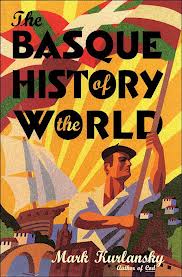 So it was almost a shock today when I finished one of the 15 or so books I currently have in progress. I came home from work, took a kind of disturbed nap, and then I finished reading a book entitled The Basque History of the World by Mark Kurlansky. I’ve always been fascinated by Basque culture, language and history, although it’s an interest I haven’t actively pursued.
So it was almost a shock today when I finished one of the 15 or so books I currently have in progress. I came home from work, took a kind of disturbed nap, and then I finished reading a book entitled The Basque History of the World by Mark Kurlansky. I’ve always been fascinated by Basque culture, language and history, although it’s an interest I haven’t actively pursued.
Partly I was surprised to have finished the book because I actually found it rather disappointing. It promises a wider scope than it offers – it’s not a Basque history of the world so much as a fairly conventional, anecdote-driven history of the Basque people. Nor does it in fact spend much energy on the Basque diaspora, which is interesting in and of itself – my main first-hand exposure to Basque culture was in Mexico, for example.
As a history, however, it’s fairly well-executed. I think the anecdotal structure facilitated my ability to finally work my way through it, and my already strong familiarity with Spanish History meant that I had a lot of context of my own to fill in the ellipses.
Maybe someday I’ll get to go and explore Basqueland.
[daily log: walking, 4.5 km]
Caveat: 포기할 수 없는 이유
The Seoul subway sometimes has these poems posted in various spots, in places where you might also see advertising. I saw this poem and I admit it struck me because it was offered with an English translation – otherwise I would have probably disregarded it.
Below is the poem, and the translation provided.
포기할 수 없는 이유
뒤처졌다고 분노하거나 좌절해서는 안 됩니다.
앞서 가는 자의 뒷모습도 소중한 교훈입니다.
포기하지 않는 당신도 누군가의 길이 될 것입니다.
– 이원준 (시인 / 소설가)
The Reason Not to Give Up
You should not be angry or frustrated even if you are falling behind.
The person walking ahead is also a valuable lesson.
You who do not give up will also be a way for someone.
– Lee, Won-jun (poet / novelist); translated by Kim, Sun-ae
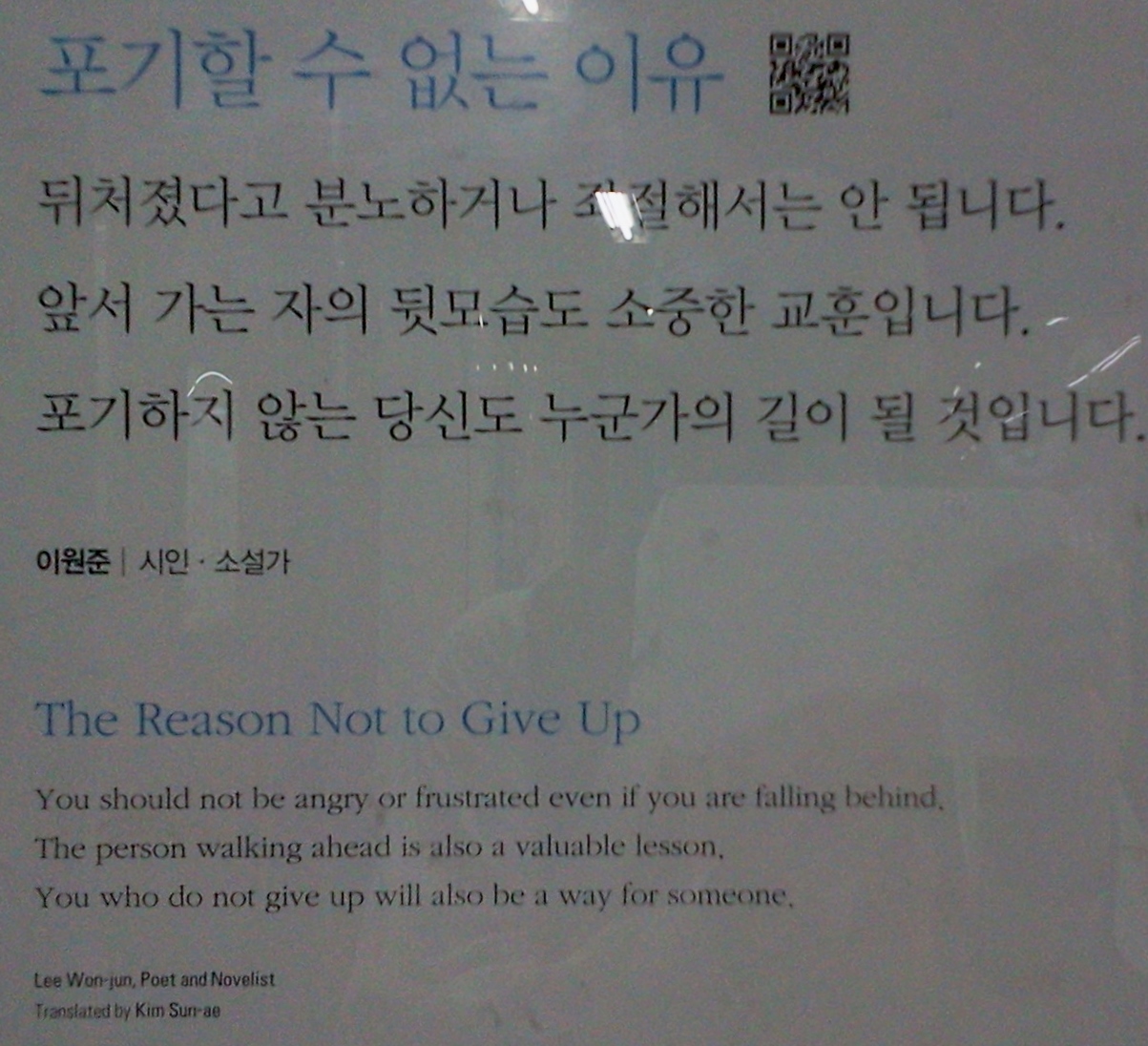
What I’m listening to right now.
Kaija Saaraho, “Sept Papillons pour violoncelle.”
Caveat: Pain Over Cobwebs… um Maybe Not
I have been so disturbed by my cobwebby brain that I did an experiment this morning and forewent my pain medication. I’m not sure it really worked. Wendy and I went into the city (Seoul) for a few hours and walked around. I still was absent-minded as all-get-out, and it was very annoying. I
forgot my phone at home and had to go back and get it. I got lost
(disoriented) twice in a subway station – that wounds my geographical
pride.
Walking around, though… I was fine, walking around – she kept worrying about if I was OK walking around. I emphasized that everything below my shoulders is quite fine and even in tip-top shape. Walking around was great. Only when we stopped to eat, and I attempted to eat some leek jeon and some dumpling/tteok soup (both bland-flavored and I can manage them, chopped into little bits) I had to break down and break out the codeine. And talking hurt, too. I talked too much, as usual. So it’s the above-the-shoulders stuff that aches and hurts and burns and is all fuzzy. That’s all.
When I got home I lay down and had a feverish-feeling nap. That’s the other thing the analgesics do (which are embedded with / accompany the opioids): they solve the feverish sensation that comes from my immune system’s current overdrive status.
I have to teach tomorrow – my September Saturday-only schedule which was off last week from the holiday.
Next week, with the start of October, I will have an approximately 20-25% teaching load. I’m really worried about it – my talking feels blurry and distorted. It’s going to be hard, and I don’t want to let down my fellow teachers or students, either.
The walking, though. Fine. We really didn’t even walk that much. Here is Wendy, probably unhappy about trying to keep up with me, in Seoul (we went to Namsan – we took the cable car up the mountain, which minimized the climbing, but didn’t eliminate it entirely).
Note the homeless guy camped on the side of the stairway-street: South Korea isn’t some kind of utopia, as some people seem to think I’m implying sometimes in how I write about life here. I like it here, and I view the country’s social problems as less severe than in the US, but I am hardly in denial that the country has some major social problems, many of which parallel those in the US.
[daily log: walking, 5 km]
Caveat: Cat War
I had meant to post this entertaining video a while back but got distracted and forgot. So I'll post it now, as I have nothing much else to say at the moment that wouldn't be a rehash of things I've said already.
Normally, I try to be sparing in my posting of the notorious internet "cat videos" on This Here Blog Thingy™, but this video was too irresistable.
Good morning.
Caveat: An End to Catastrophic Interventions
Over the last three months my body has seen a series of catastrophic interventions: surgery, various invasive scans, a major infection and a second surgery, and then 7 weeks of cancer-killing radiation therapy.
I am now hoping these interventions are over, and that way I can focus on actually trying to build up my health and resistance once again.
Oddly, I feel very little of the elation I expected to feel upon the end of my radiation series. Instead, I feel overwhelmed: overwhelmed by the fact that now, I should “get on” with my life. I no longer have any excuses, except the delay of my own body in “getting it together again.” I am a naturally impatient person – did I mention that?
Here is a picture of the technicians who did my therapy. I think the one on the left is an MD – but I’m not really sure. I didn’t really interact with them much – mostly they are in a little booth (protected from the radiation) while I was inside the machine.
I gave them a gift – some individual-sized cakes from a bakery across the street.
The lobby of the radiation building has a multilingual sign. I noticed something today for the first time – good to notice it on my last day there. What I noticed was that the language at the end is utterly messed up. Wendy thought it was mutilated French, while I wondered if maybe it was an attempt at Catalan. I’ve decided Wendy is more likely correct, but it’s very bad French, where someone may have forgotten to clear his template of some leftover Spanish, first.
I wonder if the other languages, that I don’t know as well, are messed up too?
What I’m listening to right now.
My Bloody Valentine, “When You Sleep.”
[daily log: walking, 9 km]
caveat: zap-o-matic number 30
 i dreamed i was driving my dad’s 1928 ford model A through rural korea. i was alone. i had stopped to fix something, along a dusty road that on closer inspection resembled rural mexico more than rural korea. my brother rode by on a motorcycle and refused to to help. he was wielding a flaming tree branch.
i dreamed i was driving my dad’s 1928 ford model A through rural korea. i was alone. i had stopped to fix something, along a dusty road that on closer inspection resembled rural mexico more than rural korea. my brother rode by on a motorcycle and refused to to help. he was wielding a flaming tree branch.
then a man stopped and gazed on me as i worked. it took me a while to realize he wasnt korean. he had a stark, expressionless face, and blue eyes. he asked me where the post office was. when i said i didn’t know, he ran off as if upset. i finally got the model A running again, and drove into a town. there were men with cows standing around, arguing. i saw the blue-eyed man who had asked earlier about the post office. he was carrying a basket of snakes.
the model A was full of junk. trash, really. my brother came by and insisted that the best way to deal with it was to light it on fire, which he did. the flames roared, and i pulled the trash out of the car as it became clear the flames would consume the vehicle too. as i did, there was a woman among the trash. she was on fire. andrew and i kicked dirt over her, trying to put out the fire. the woman was screaming.
the men with cows watched. the man with blue eyes ran away.
i awoke, wide awake, at 530 am.
(the picture, above right, is a scan of one taken of the car in 1969. my dad still has the car.)
 today is my last day of the x-ray tomographic radiation therapy.
today is my last day of the x-ray tomographic radiation therapy.
now i just have to get healthy. that’s going to be rougher than i expected. somehow, in conceptualizing this process, i had imagined, quite inaccurately, that i would finish the radiation and then immediately go back to my regular life. this is clearly not going to happen: i expect the next week or two to actually be the worst in terms of discomfort and incapacitation, as my body begins the slow and difficult work of rebuilding and repairing all the things in my mouth and neck that the high-energy photons have broken and damaged.
Caveat: Just Walk
My brain isn’t very functional these days, balanced as it is on the ridgeline separating pain and medication. Sometimes it’s the pain, sometimes it’s the medication, but either way, my brain is immersed in syrup.
So I sit at my computer a lot. Reading blogs or playing my game. Or just sit, zoning out, listening to NPR.
But I still walk a lot.
Every day, I walk to or from the hospital, or both.
Yesterday, here are Wenday and I at the observation platform at the top of Jeongbal hill, taken on the way home.
Yesterday, Wendy and I walked around the lake in Lake Park.
Here are some pictures of the lake.
Today, we walked over to the Madu neighborhood and back.
Here is an idiosyncratic (and probably very expensive) home we saw there.
What I’m listening to right now.
Django Django, “Storm.”
[daily log: walking, 9 km]
Caveat: We Require More Minerals
caveat: zap-o-matic number 29
soon.
Caveat: un silencio o memoria
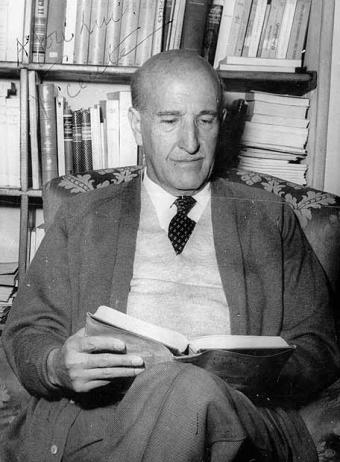 EN EL FONDO DEL POZO
EN EL FONDO DEL POZO
(El Enterrado)
Allá en el fondo del pozo donde las florecillas
donde las lindas margaritas no vacilan
donde no hay viento o perfume de hombre
donde jamás el mar impone su amenaza
allí allí está quedo ese silencio
hecho como un rumor ahogado con un puño
Si una abeja si un ave voladora
si ese error que no se espera nunca
se produce
el frío permanece
El sueño en vertical hundió la tierra
y ya el aire está libre
Acaso una voz una mano ya suelta
un impulso hacia arriba aspira a luna
a calma a tibieza a ese veneno
de una almohada en la boca que se ahoga
¡Pero dormir es tan sereno siempre!
Sobre el frío sobre el hielo sobre una sombra de mejilla
sobre una palabra yerta y más ya ida
sobre la misma tierra siempre virgen
Una tabla en el fondo oh pozo innúmero
esa lisura ilustre que comprueba
que una espalda es contacto es frío seco
es sueño siempre aunque la frente esté borrada
Pueden pasar ya nubes Nadie sabe
Ese clamor ¿Existen las campanas?
Recuerdo que el color blanco o las formas
recuerdo que los labios, sí, hasta hablaban
Era el tiempo caliente. Luz inmólame
Era entonces cuando el relámpago de pronto
quedaba suspendido hecho de hierro
Tiempo de los suspiros o de adórame
cuando nunca las aves perdían plumas
Tiempo de suavidad y permanencia
Los galopes no daban sobre el pecho
no quedaban los cascos, no eran cera
Las lágrimas rodaban como besos
Y en el oído el eco era ya sólido
Así la eternidad era el minuto
El tiempo sólo una tremenda mano
sobre el cabello largo detenida
Oh sí. En este hondo silencio o humedades
bajo las siete capas de cielo azul yo ignoro
la música cuajada en hielo súbito
la garganta que se derrumba sobre los ojos
la íntima onda que se anega sobre los labios
Dormido como una tela
siento crecer la hierba verde suave
que inútilmente aguarda ser curvado
Una mano de acero sobre el césped
un corazón un juguete olvidado
un resorte una lima un beso un vidrio
Una flor de cristal que así impasible
chupa de tierra un silencio o memoria.
– Vicente Aleixandre (poeta epsañol, 1898-1984)
[daily log: walking, 7 km]
caveat: zap-o-matic number 28
i forgot my phone in going to my session this morning, so this posting is later than usual.
its drizzling.
i have this metallic feel in my mouth, the last few days gradually becoming more pronounced. its like i tried to suck on hot ball bearings as if it were candy.
i dont like this increasing absent-mindedness. im sure its the medication, and not the treatment per se. but whenever i feel out of control of my mental faculties, i start to panic about old age, senility and the conditions under which my life would quickly lose meaning.
two more sessions. then some weeks of recovery, which ive come to realize will be worse than the treatment.
grr. really grumpy today.
Caveat: A mob of cobblers
Dreams
Dreams are but interludes which Fancy makes;
When monarch Reason sleeps, this mimic wakes:
Compounds a medley of disjointed things,
A mob of cobblers, and a court of kings:
Light fumes are merry, grosser fumes are sad;
Both are the reasonable soul run mad;
And many monstrous forms in sleep we see,
That neither were, nor are, nor e'er can be.
Sometimes forgotten things long cast behind
Rush forward in the brain, and come to mind.
The nurse's legends are for truths received,
And the man dreams but what the boy believed.
Sometimes we but rehearse a former play,
The night restores our actions done by day;
As hounds in sleep will open for their prey.
In short, the farce of dreams is of a piece,
Chimeras all; and more absurd, or less.
– John Dryden (English poet, 1631-1700)
I went to my treatment session, this morning, and took an extra pain pill afterward – that's the first time I've doubled down like that, although the doctor had said I could. It left me feeling disjointed and outside of time, and I zombified in front of my computer playing a game.
I somewhat recovered, after Wendy reminded me the time, and so we went over to the hospital again to meet Dr Ryu, but the visit was fairly perfunctory. He didn't seem to find anything unexpected, and I kept my optimism.
We walked over to my work and I introduced Wendy to my coworkers, but I didn't stay long. Finally, we walked back home.
What I'm listening to right now.
The Tallest Man on Earth, "1904."
[daily log: walking, 7 km]
caveat: zap-o-matic number 27
wendy came with me to the hospital so i didnt walk – i walk too fast as part of my normal routine to expect her to keep up.
im feeling discouraged after my five day break for the following reason: i had hoped that after five days i would have begun feeling "better" but in fact i feel just as bad if not worse. this is discouraging because it means once i finish the radiation series this thursday, its still not really finished, as the slog to full health will remain a long one.
this is worrying because i had made the optimistic promise to resume a regular teaching schedule on october first, but under the present conditions that os hard to imagine. im going to have to have a depressing conversation with curt, as a consequence. and of course, each month of not working full time is expensive, too – more so than the actual treatment. i continue to shovel through my retirement savings at an alarming rate.
i visualize scrouge mcduck, emptying one of his money-swimming vaults with a shovel or a bulldozer.
Caveat: 흥국사
I’m really not up to day-long trips, right now. My energy-level is limited. However, it’s still important to get out of the house and I want to show at least some things to Wendy, too.
So I’ve been thinking of shorter half-day or several-hours-long trips we could do. I’ve long thought I should make more of an effort to visit things that are close by – landmarks, temples, parks, etc., that are right here in Goyang City. So many things are nearby that I never visit because it’s always that phenomenon of “I’ll be able to visit that any time I want” which boils down to never visiting it.
With that in mind, today we went to a temple called 흥국사 [heung guk sa] which is on the eastern edge of Goyang, up against where the city touches Seoul at the western end of Bukhansan National Park.
It turned out to be a rather rustic temple – not polished for the tourists, at all, just a working temple, a bit run down in areas. I actually like seeing places like this.
It took about an hour to get there: subway to Gupabal Station, then bus number 704 up the road that parallels the city limit between Seoul and Goyang for about 20 minutes to a rather rural-looking spot. Then walking up a one-lane road, up a narrow valley between two arms of a small mountain, to the temple.
Here are some pictures.
At the top of the road, here is the temple parking area.
A tourist map of Goyang on an announcement board.
The gathering area in front of the complex of buildings.
Looking up toward some of the buildings.
Bukhansan in the distance.
Eaves of two buildings, a hanging bell, and the peaks of Bukhansan in the distance.
A guy flying along.
A seashore scene.
A really nice painting up above the level where most of the panel paintings are, up under the eaves.
A dragon.
Some guys talking in what looks like a blue fog.
A guy riding a tiger.
Another nice panel painting.
Wendy is resting on some quarried stone for building curbs or steps. There was some construction going on at parts of the temple site.
Jared and the dragon.
Another view showing how unpopulated it was, there, and the western side of Bukhansan in the background.
Looking up at several buildings – Wendy is standing on the balcony on the building to the right.
Looking at the temple from the large gathering area in front of it.
A bored looking dog near the temple.
A hint of fall colors in the parking area.
Crossing a small stream on the small road near the main road (I think this stream is the city limit between Seoul and Goyang, but I’m not positive).
The sign for the temple at the main road where the bus stop is.
Then we got back on the bus and went back to the subway and I came home.
[daily log: walking, 3 km]
Caveat: sobre los silos de Ítaca
Llegar a ese punto difuso
"Los dioses saben lo venidero, los hombres lo acontecido,
y los sabios lo que se cierne." – Filóstrato
Llegar a ese punto difuso donde poder
tomar distancia sobre uno mismo
observando al sustentador incardinado
transitando encrucijadas de meandros…
Ser receptor de las vibraciones de lo que se cierne.
Recibir el misterioso zumbido y trasladarlo
al depositario de mi inherente legado
para que cuide mis emociones y pasos
eligiendo el curso adecuado
para el devenir de mis futuros años.
Que al dejar mi incorpóreo estado
ya surcando el longevo camino deseado
la despensa de mi galera se colme
de los más nutritivos conocimientos
afluentes de gozo y tersura para mi espíritu.
En esos parajes de acontecimientos
hallar lo hermoso, lo noble, lo magnífico
saborearlo sin premura, tomándome mi tiempo,
y al llegar a puerto se elevasen las riquezas
que mi alma ansía sobre los silos de Ítaca.
– Francisco Jesús Muñoz Soler (poeta español)
Caveat: Mopey Day
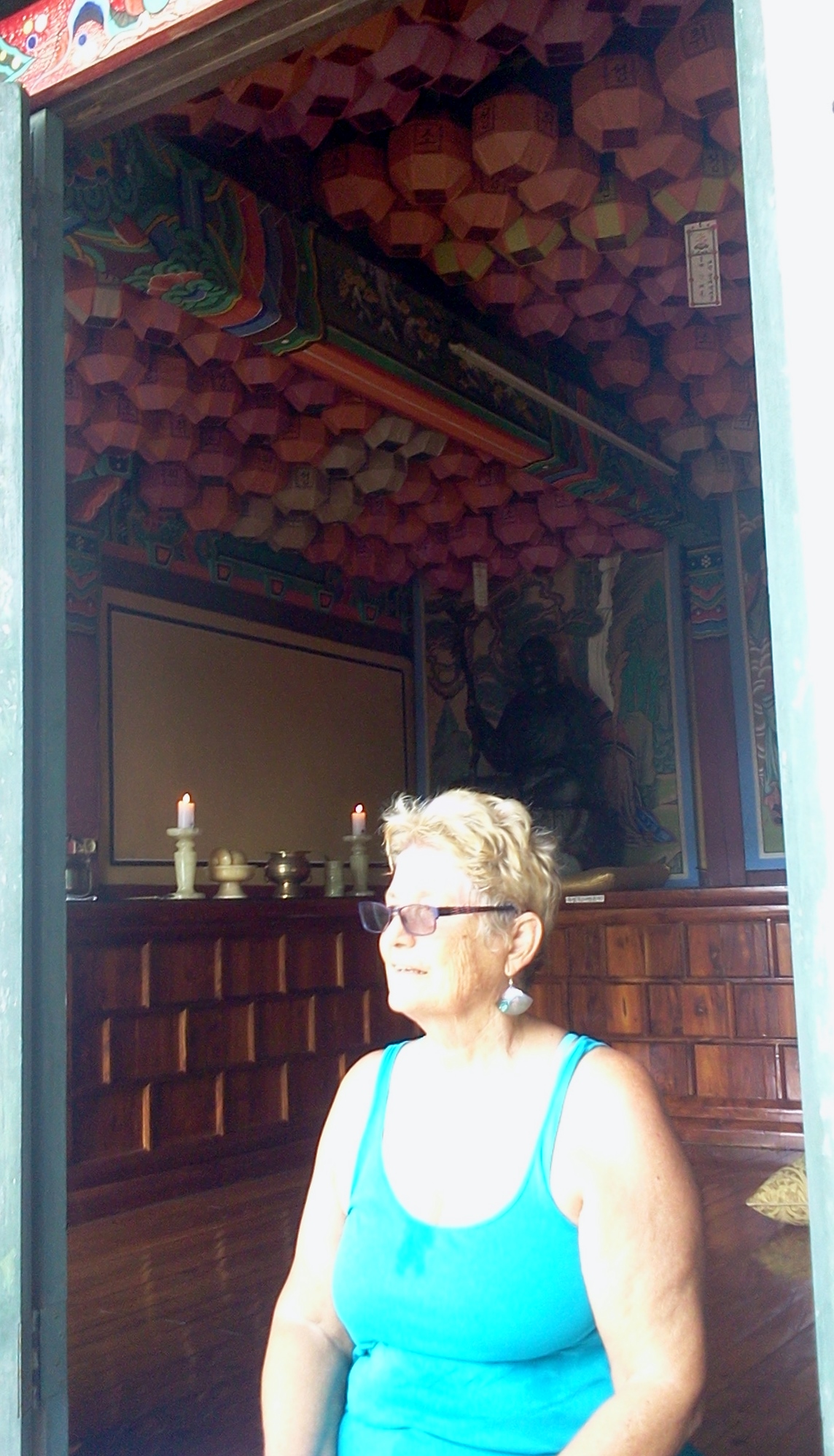 Today was a bit of a retrogression on the “gradually feeling better” aspect of this five-day break from radiation therapy. I had a lot of pain in my mouth, even despite my meds. Perhaps I pushed too hard yesterday in trying to eat actual food as opposed to sticking to my semi-disgusting nutrition drinks. This makes me feel less optimistic about a quick recovery once the radiation is done, at the end of next week.
Today was a bit of a retrogression on the “gradually feeling better” aspect of this five-day break from radiation therapy. I had a lot of pain in my mouth, even despite my meds. Perhaps I pushed too hard yesterday in trying to eat actual food as opposed to sticking to my semi-disgusting nutrition drinks. This makes me feel less optimistic about a quick recovery once the radiation is done, at the end of next week.
Nevertheless, at least in morning, I took Wendy on a short hike over to Jungsan, to the Yeongcheon temple (영천사). There was a service being held there – it was busier than I’d ever seen it. On the way back down the hill, we met an 84 year-old Korean War veteran and his 78 year-old wife hiking up the mountain to the temple. That was impressive. Like many Korean War veterans, his English was pretty good, so we talked briefly.
Wendy ran out of patience with my mopey, somewhat unsociable hosting – or she ran out of patience with my claustrophobic apartment. So we found a hotel for her, over near the bus station at Baekseok.
I slept part of the afternoon.
A view down the hill from the temple.
[daily log: walking, 4 km]
